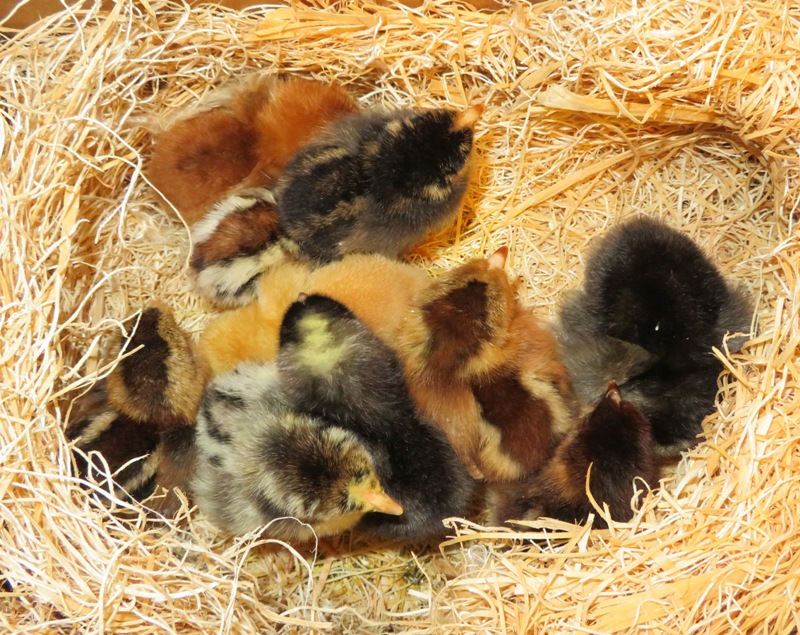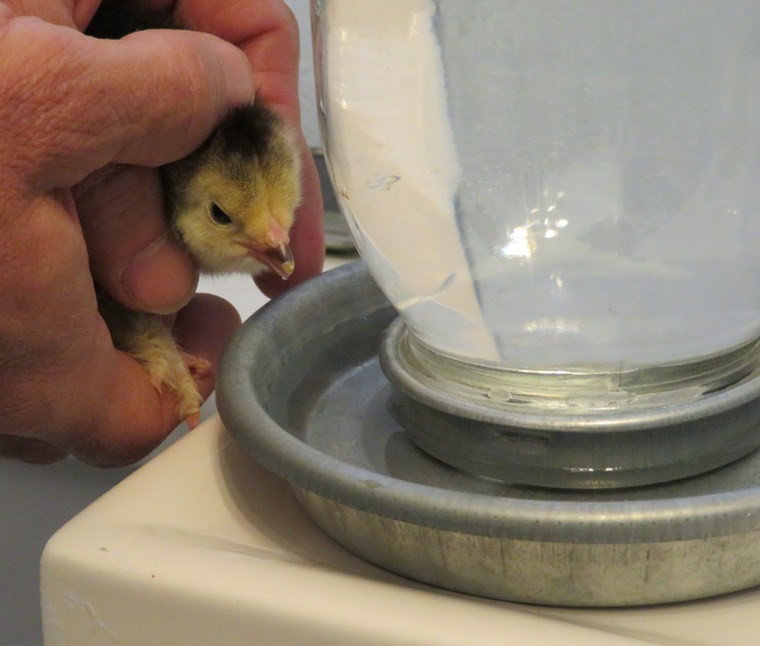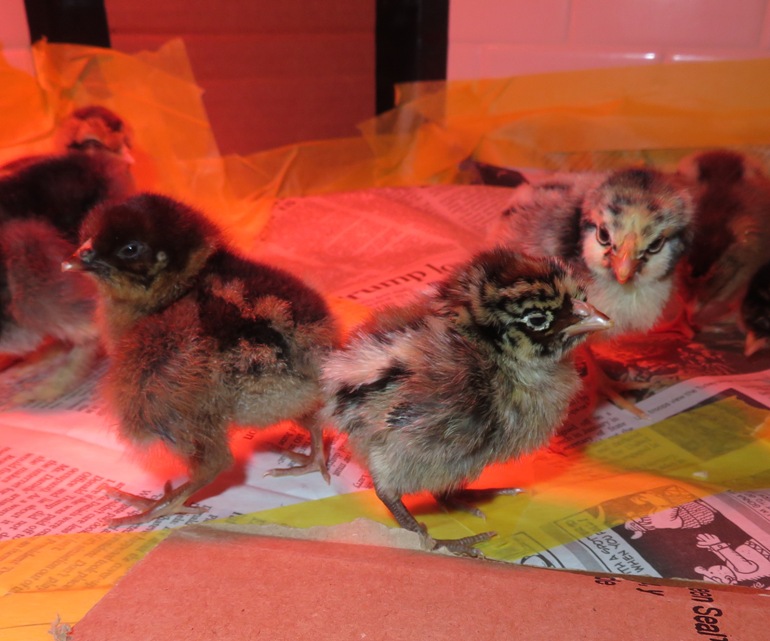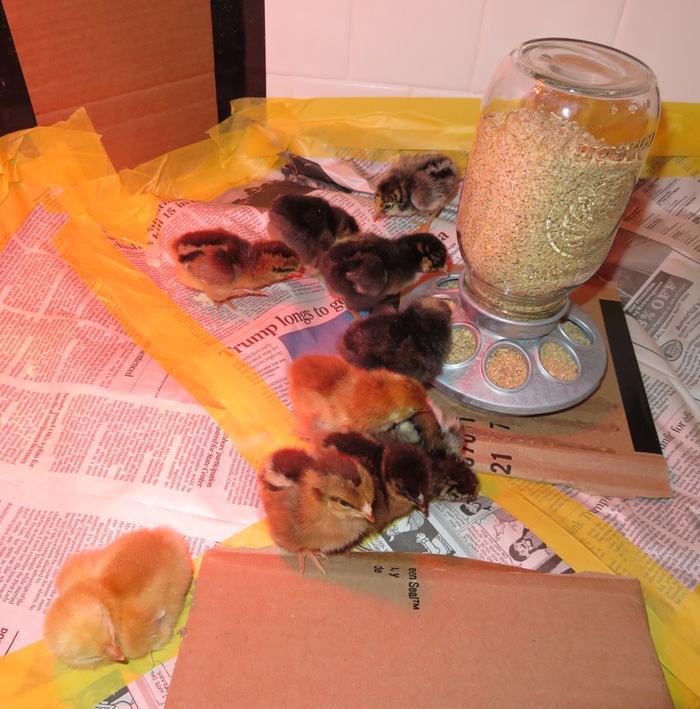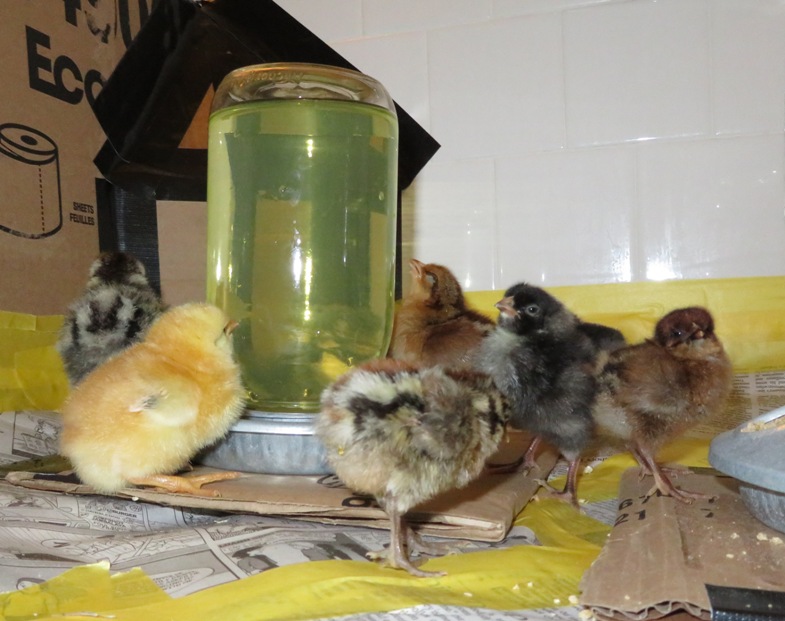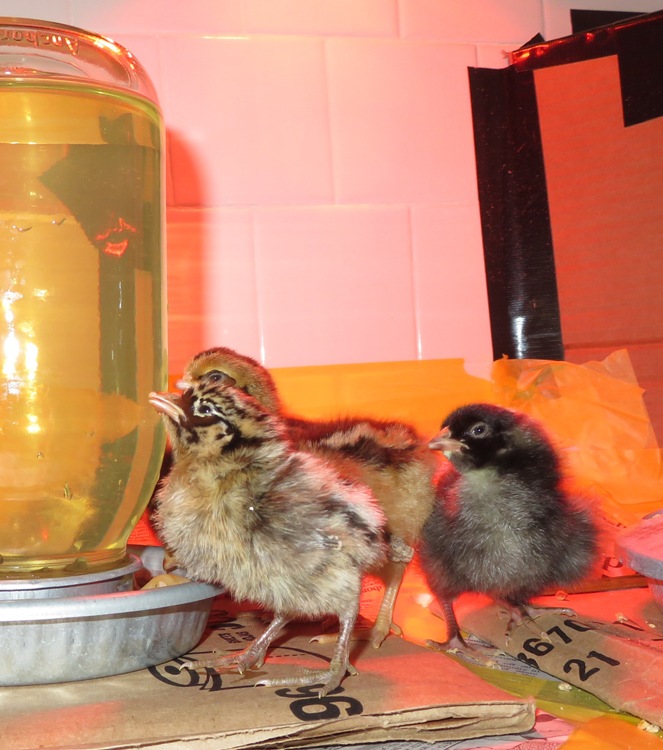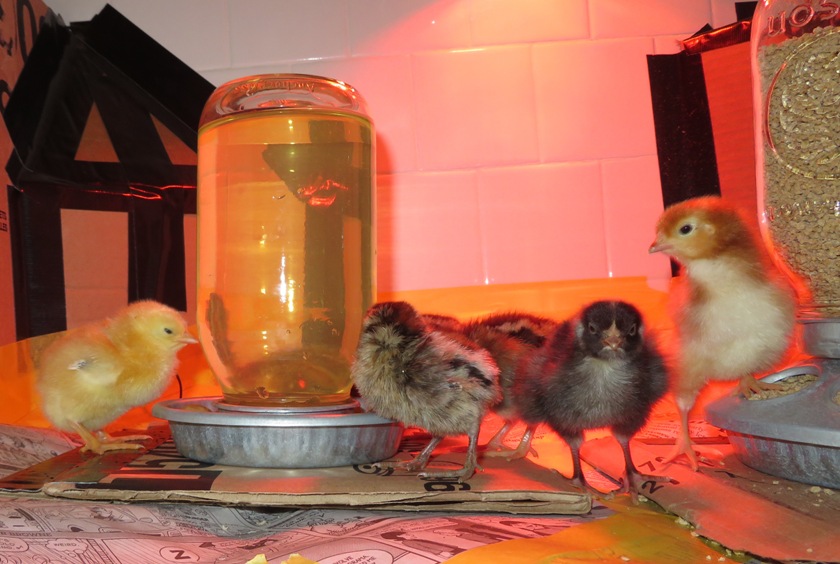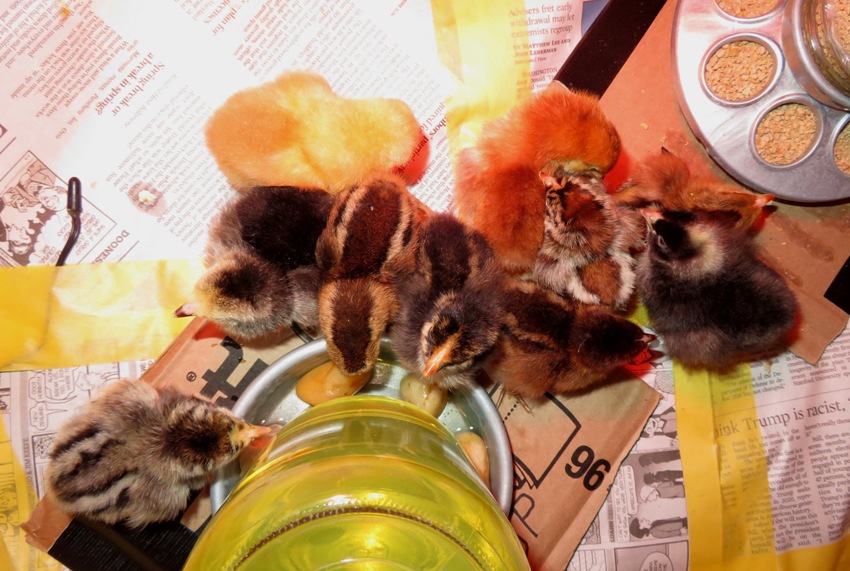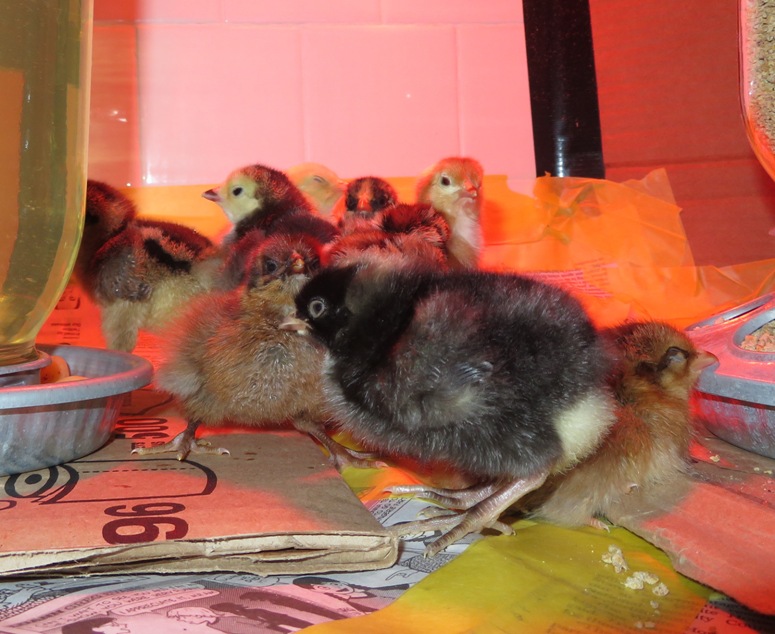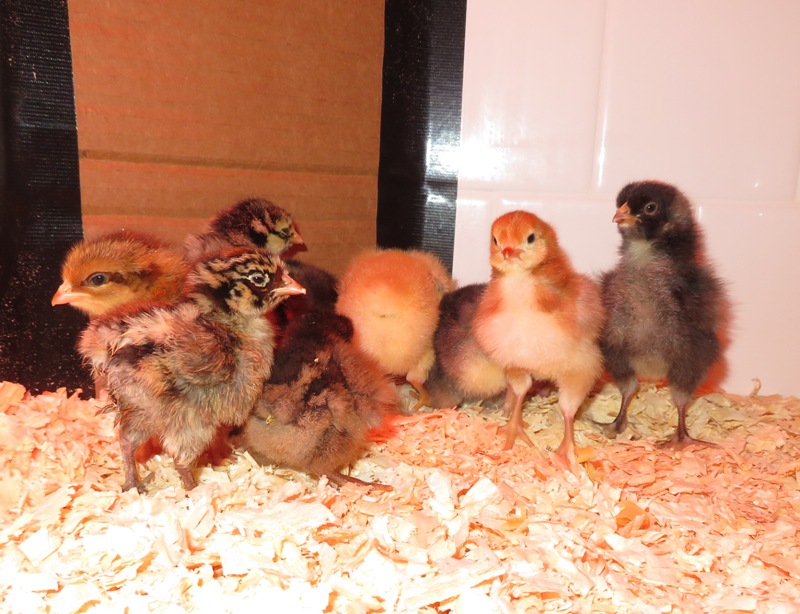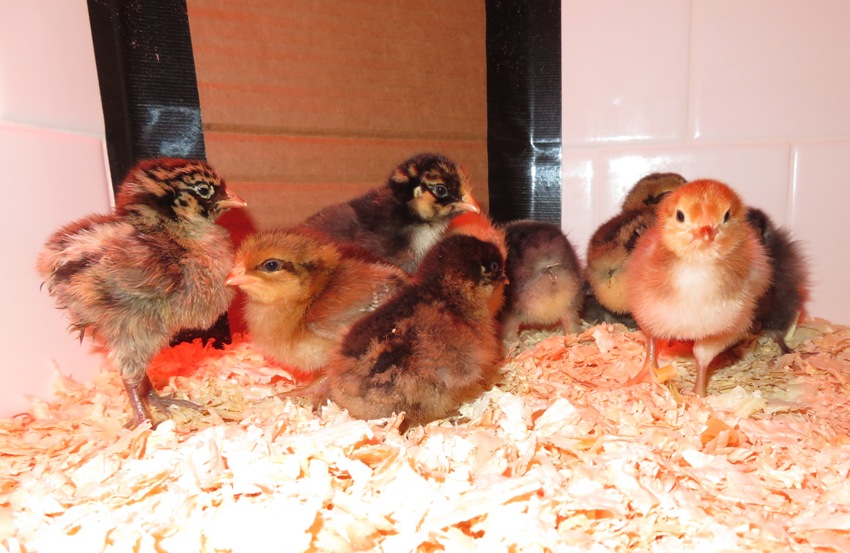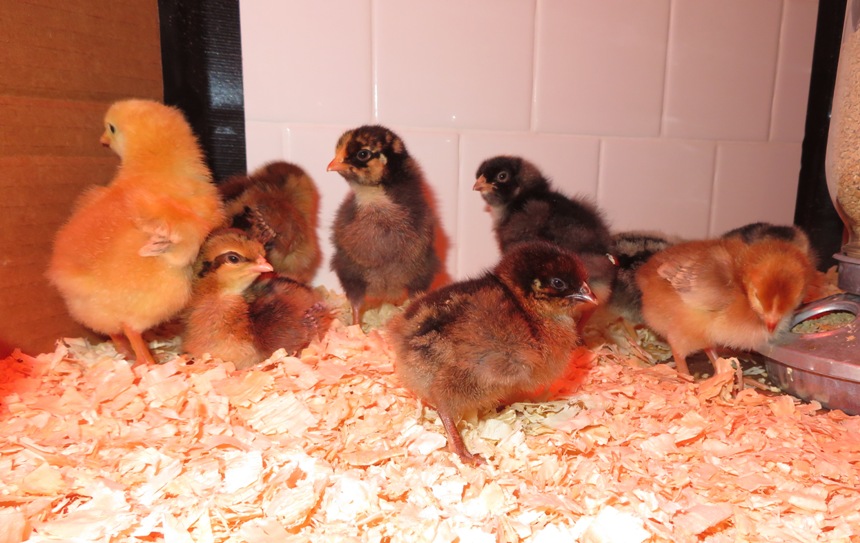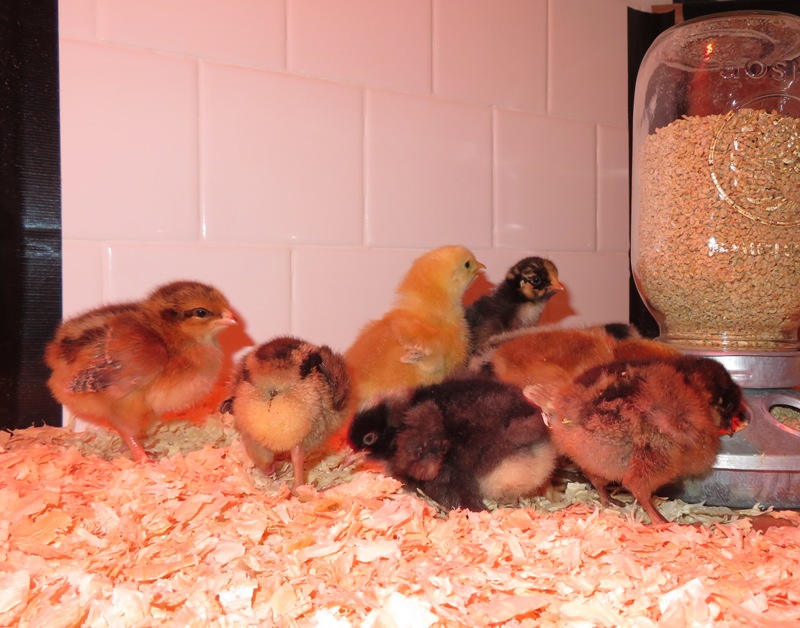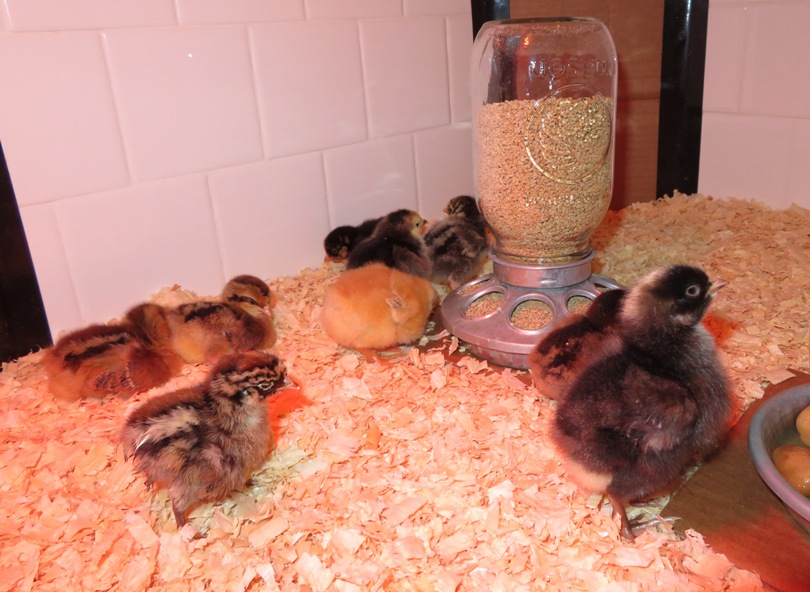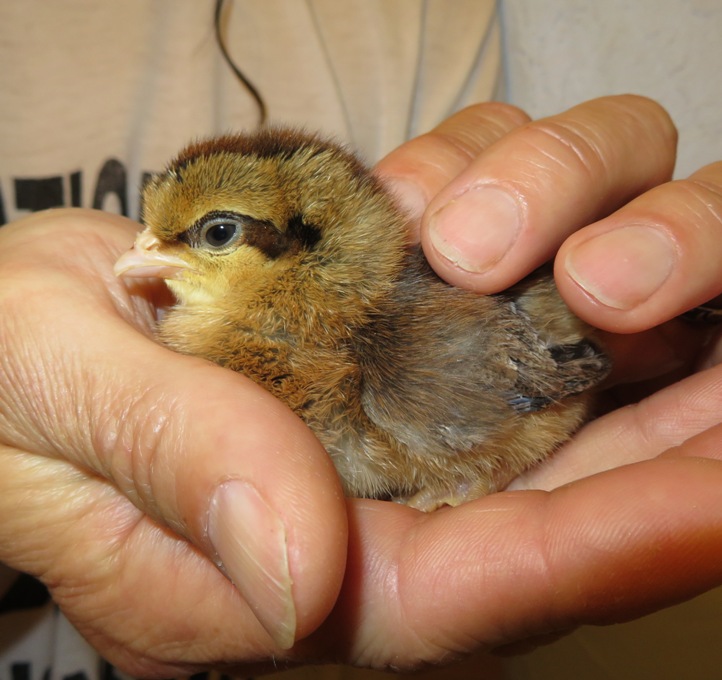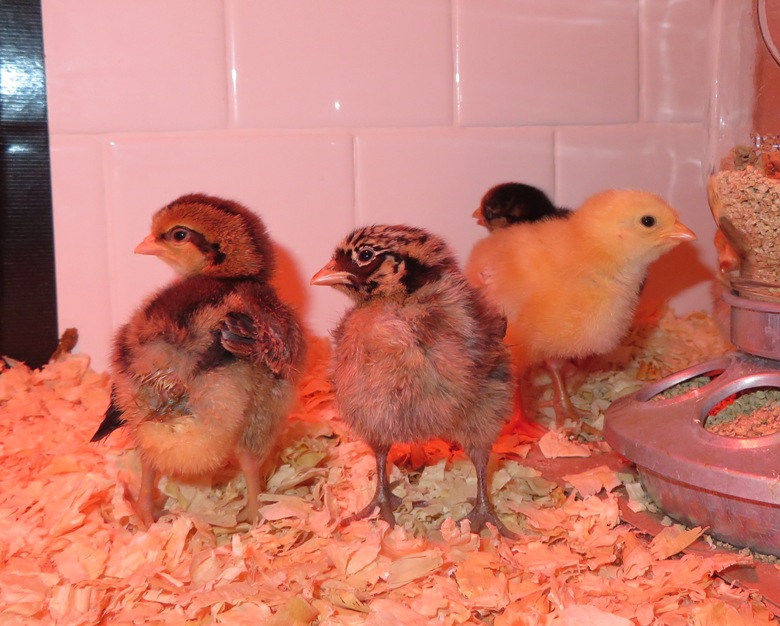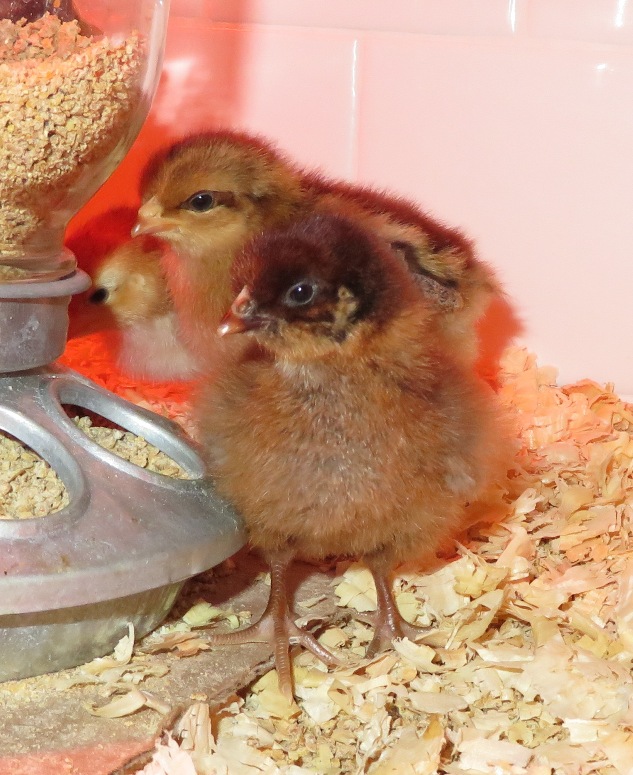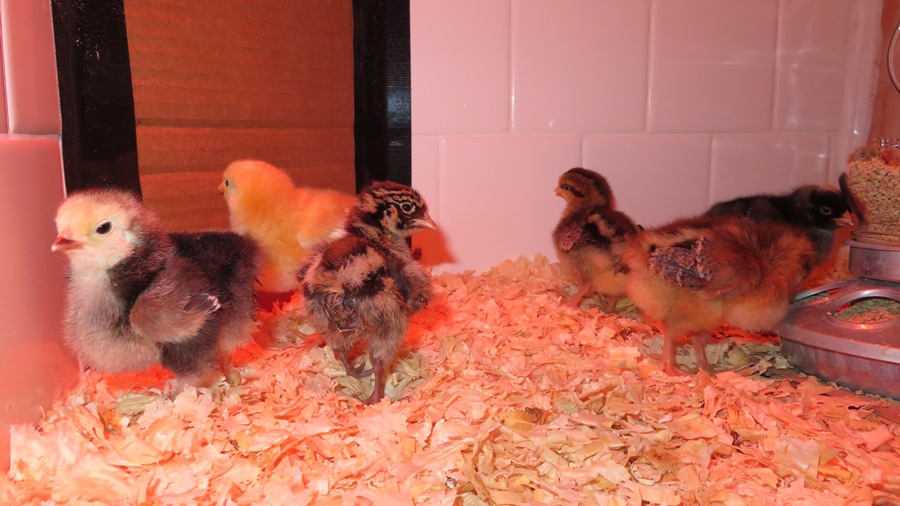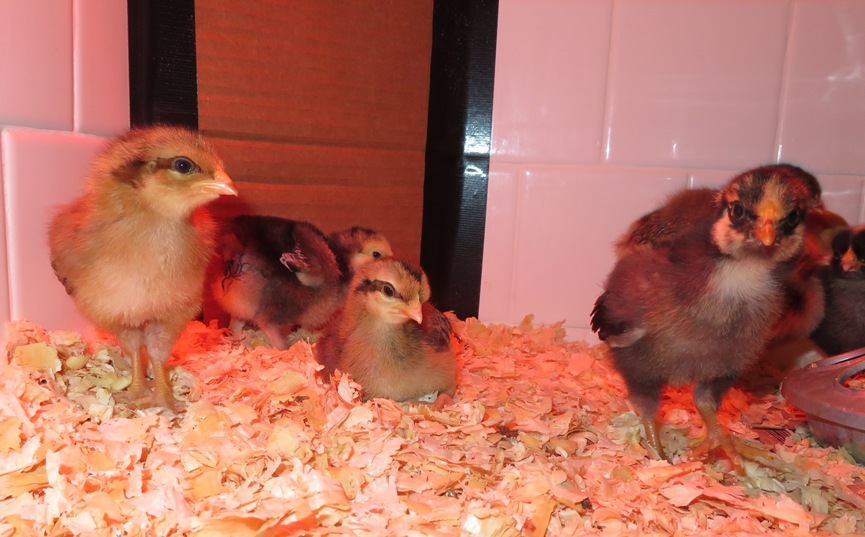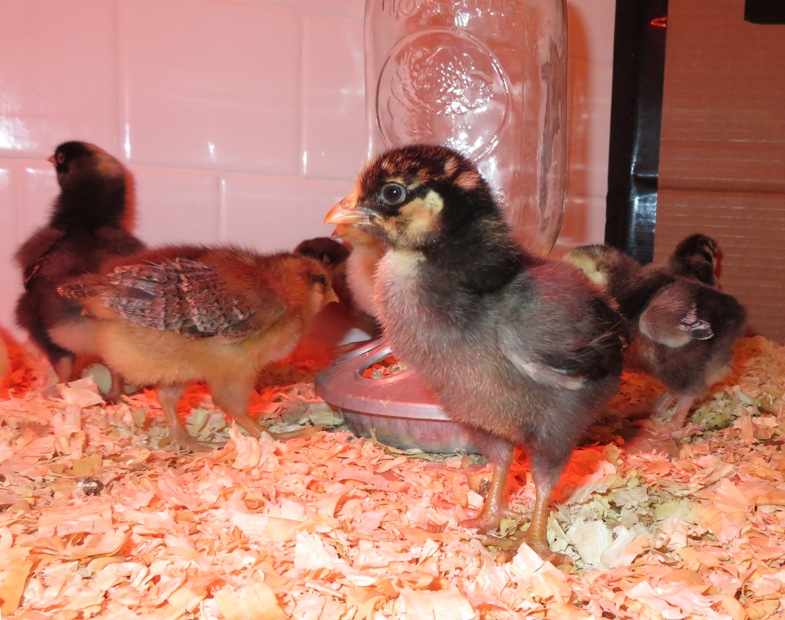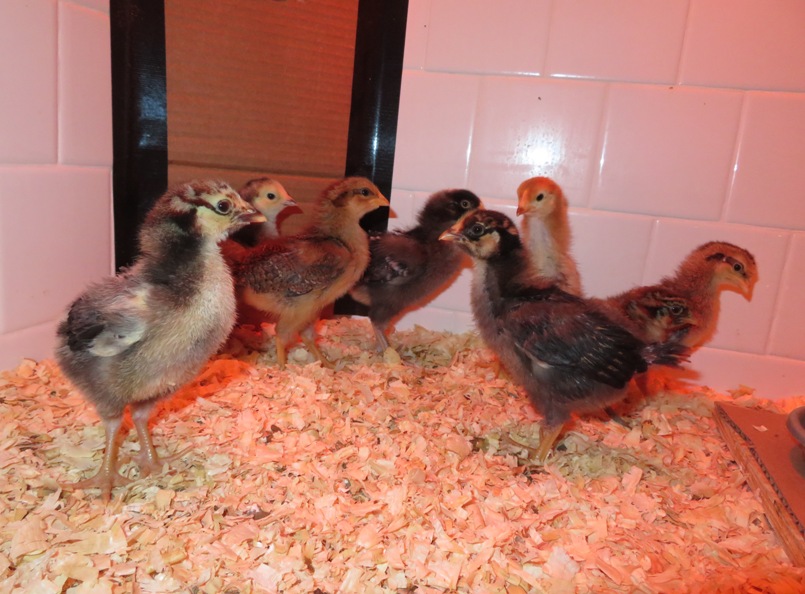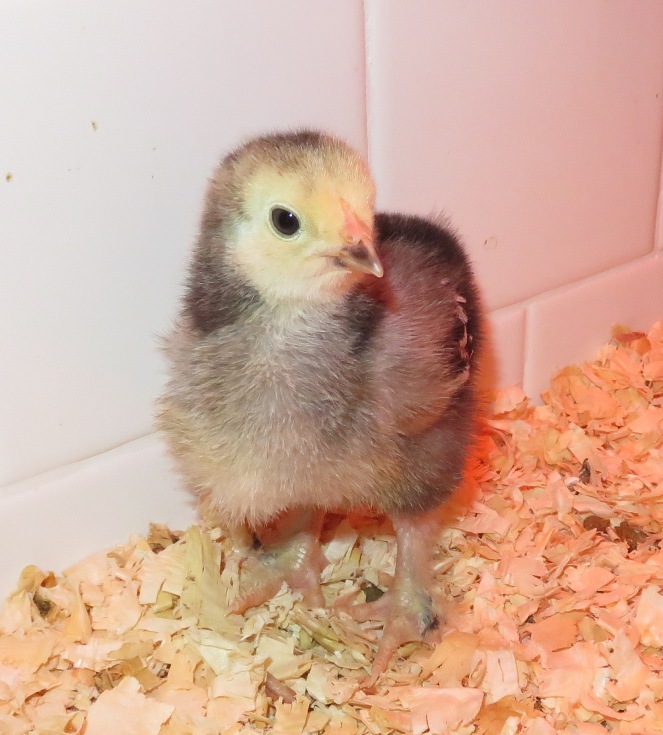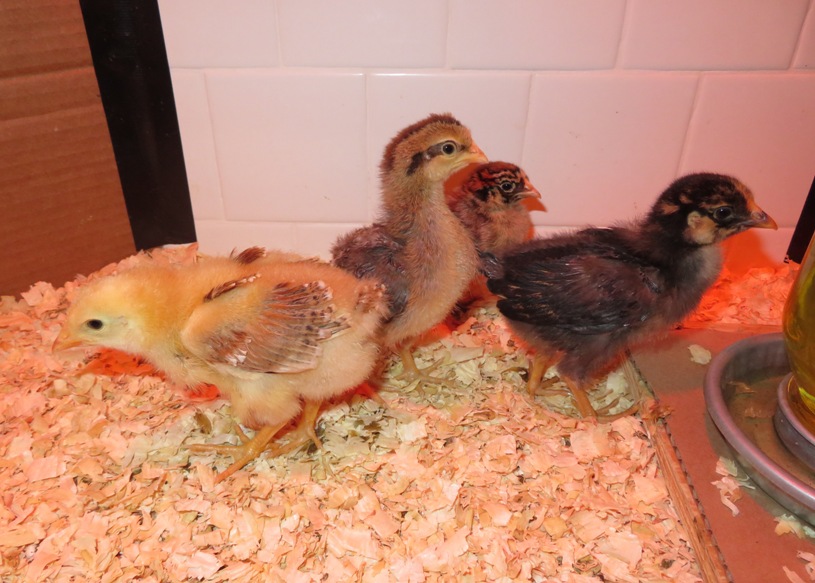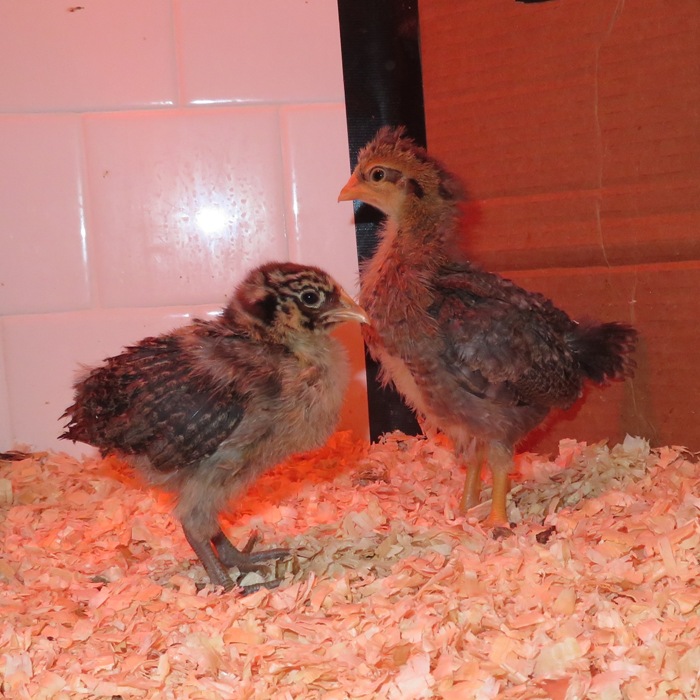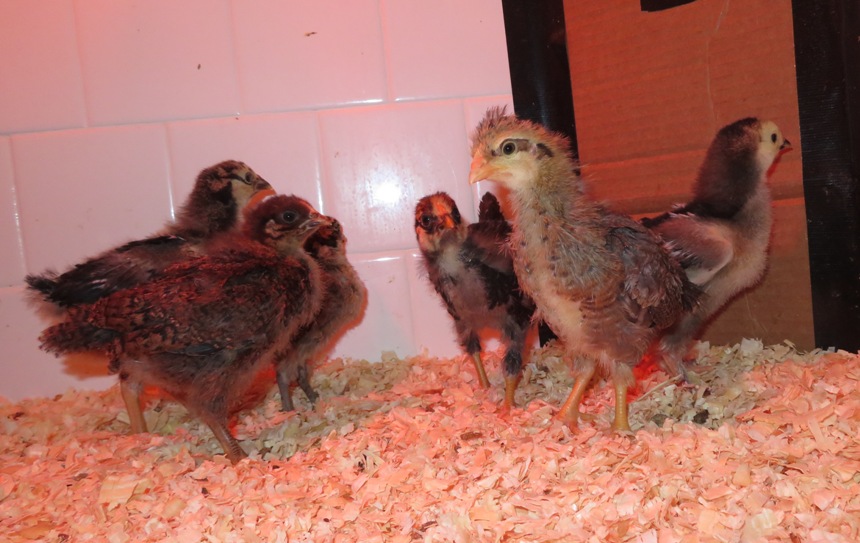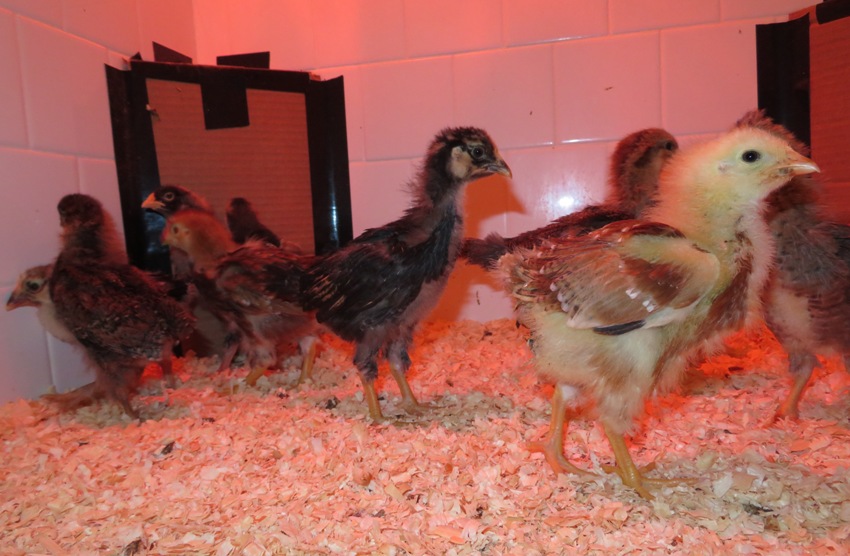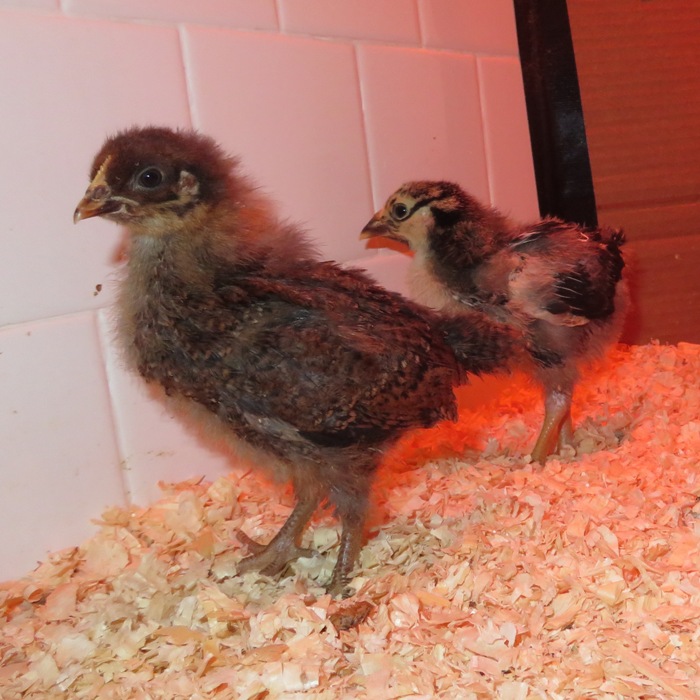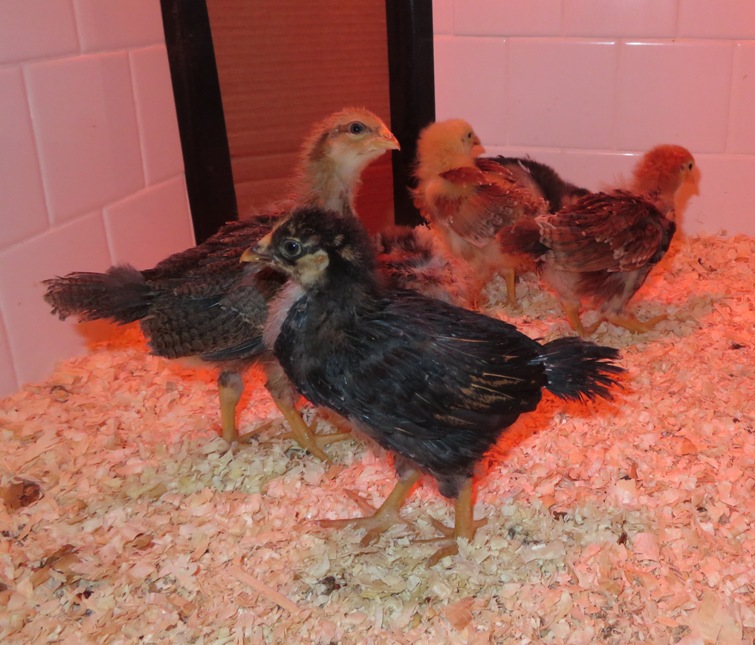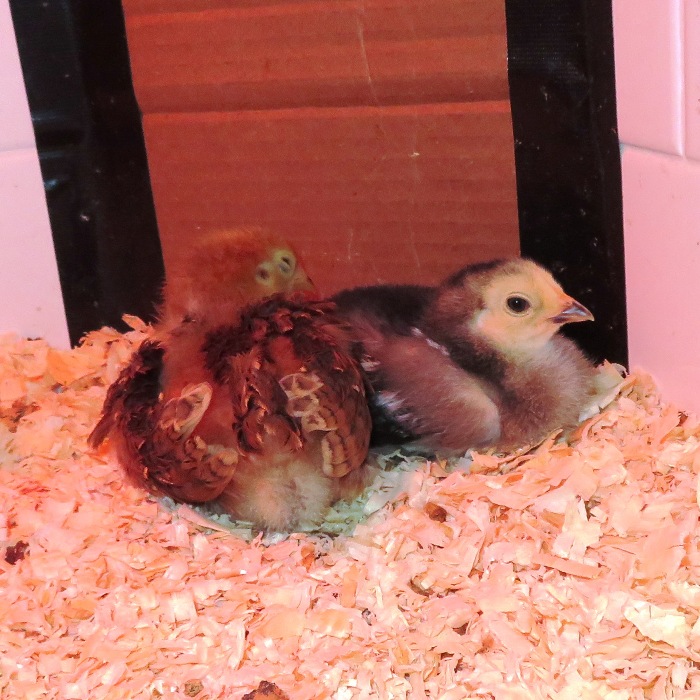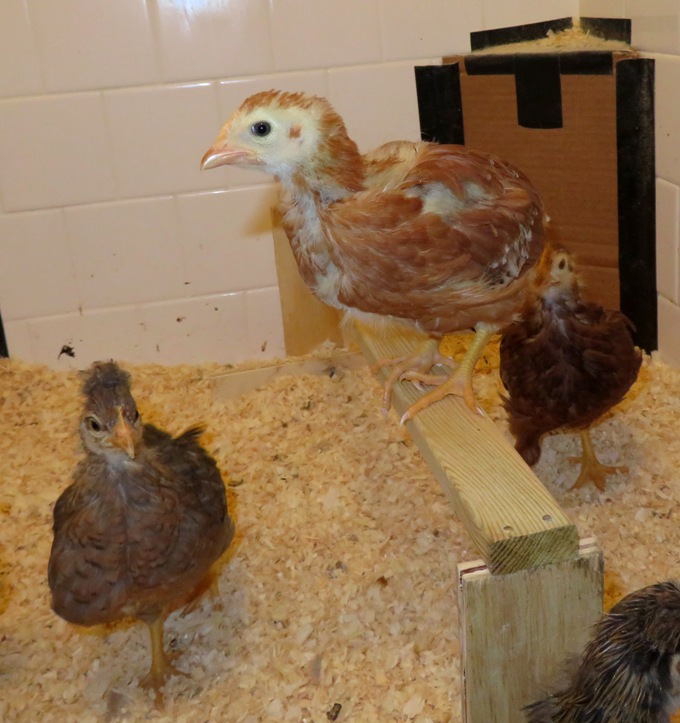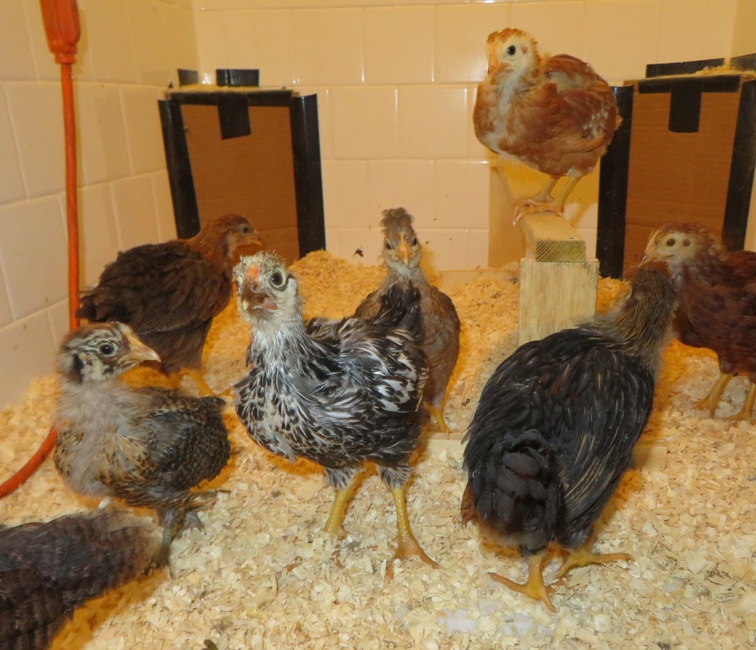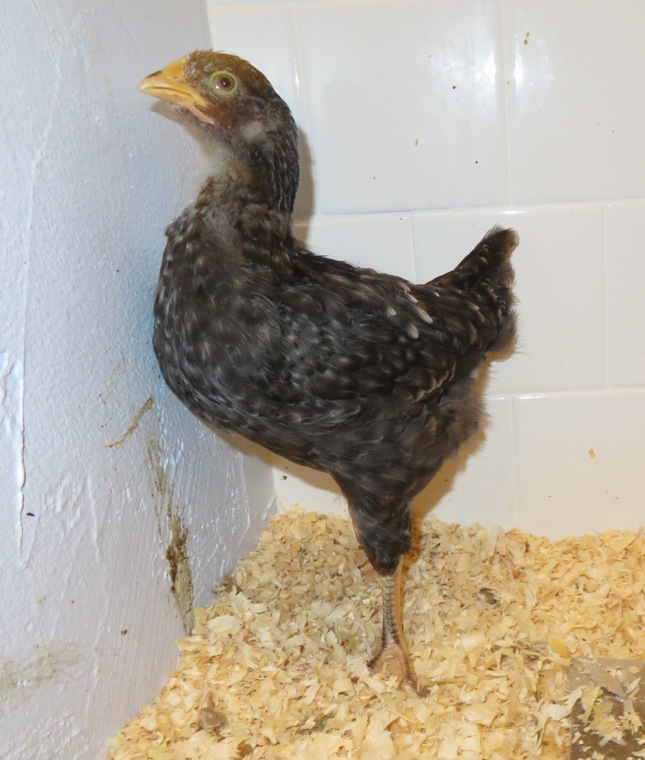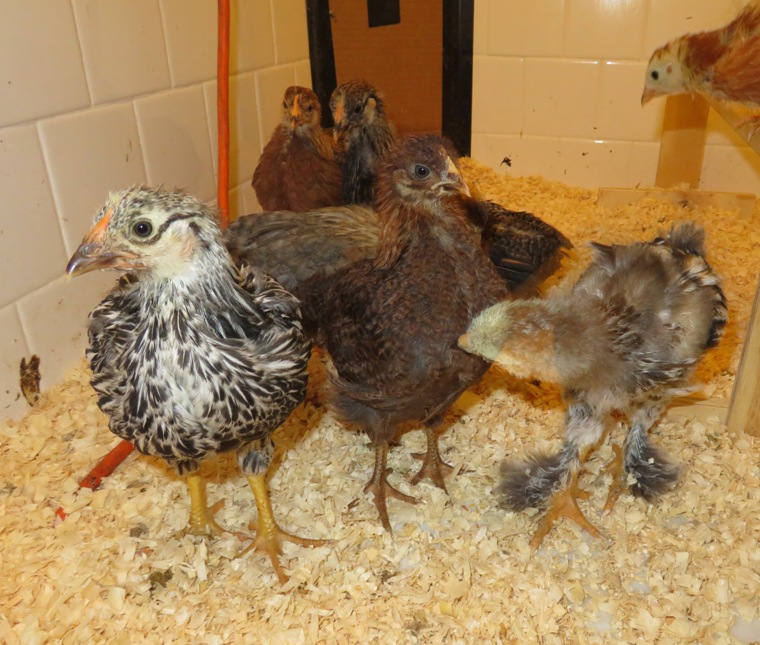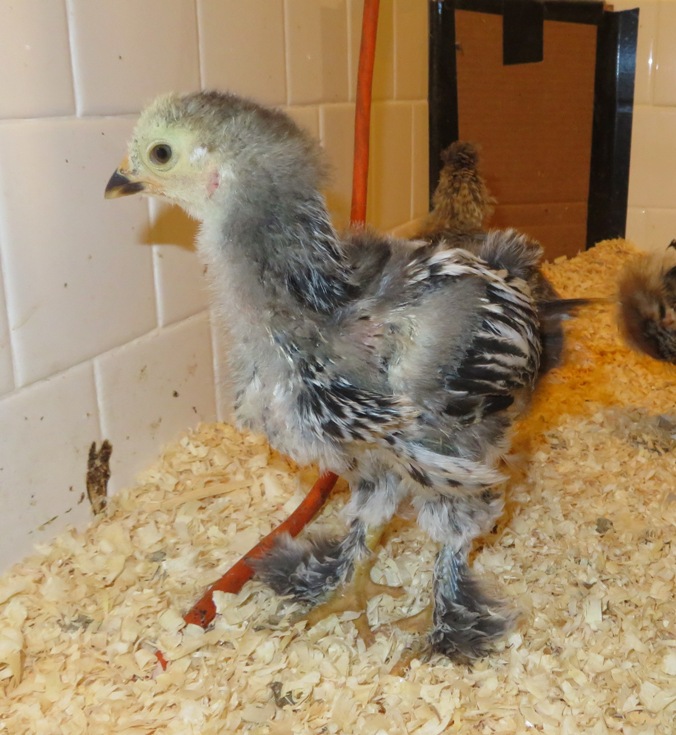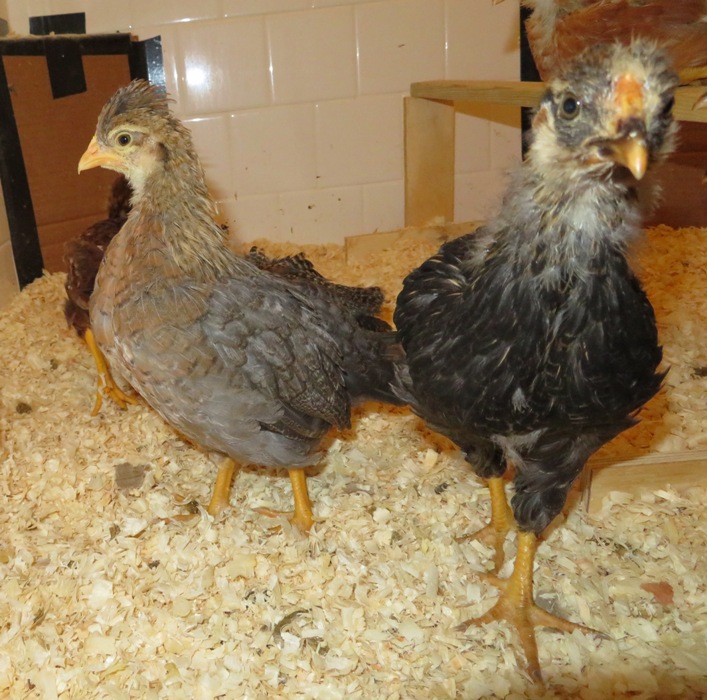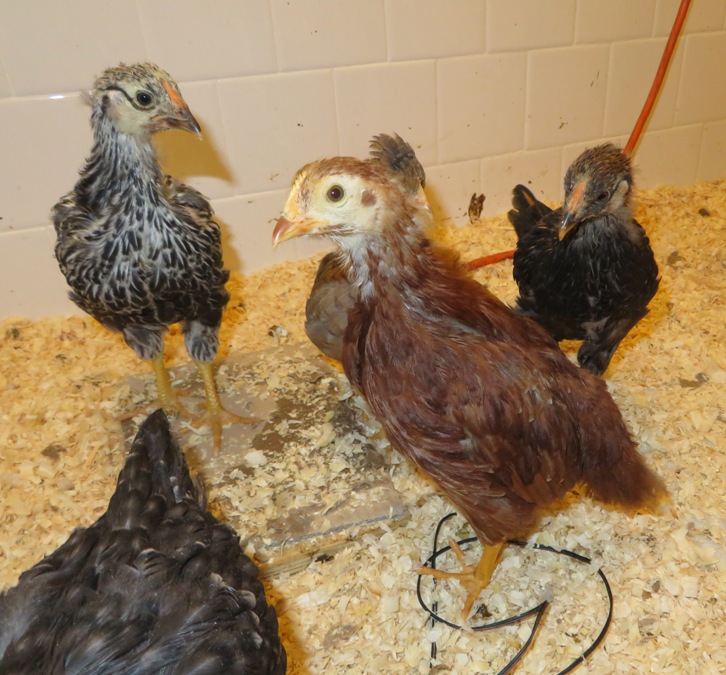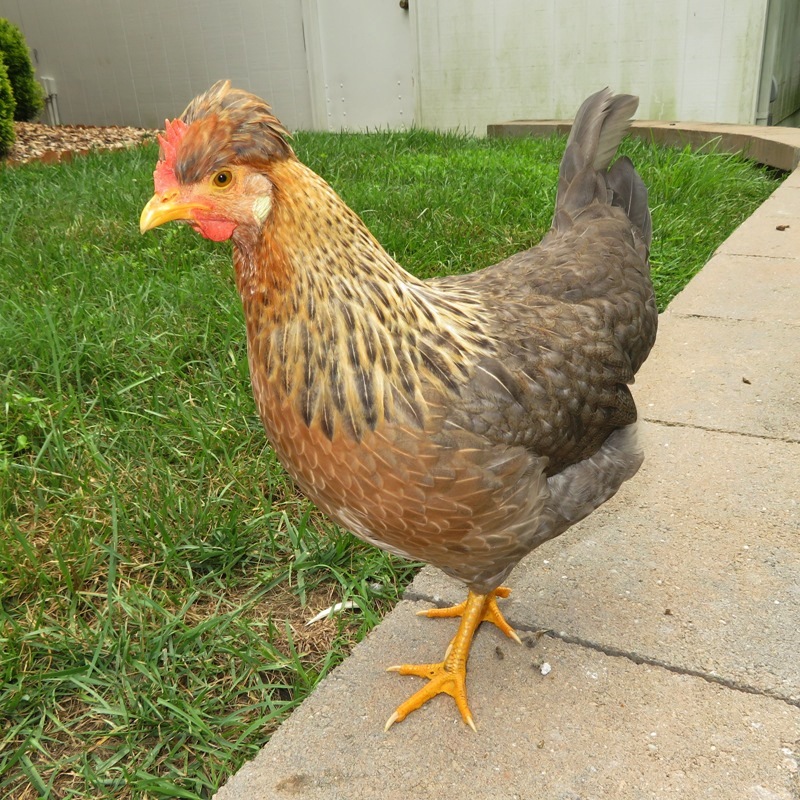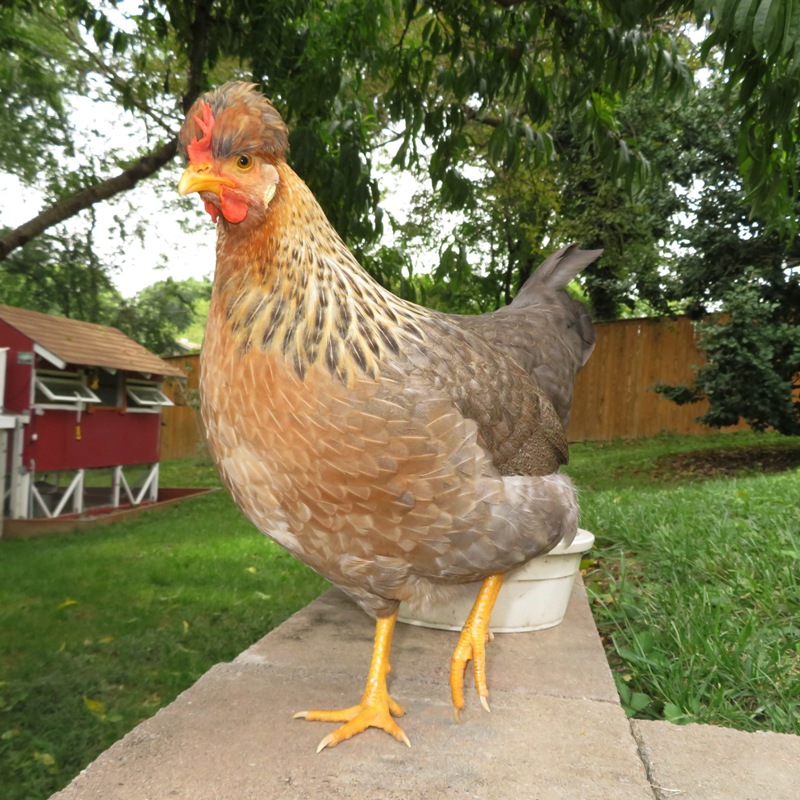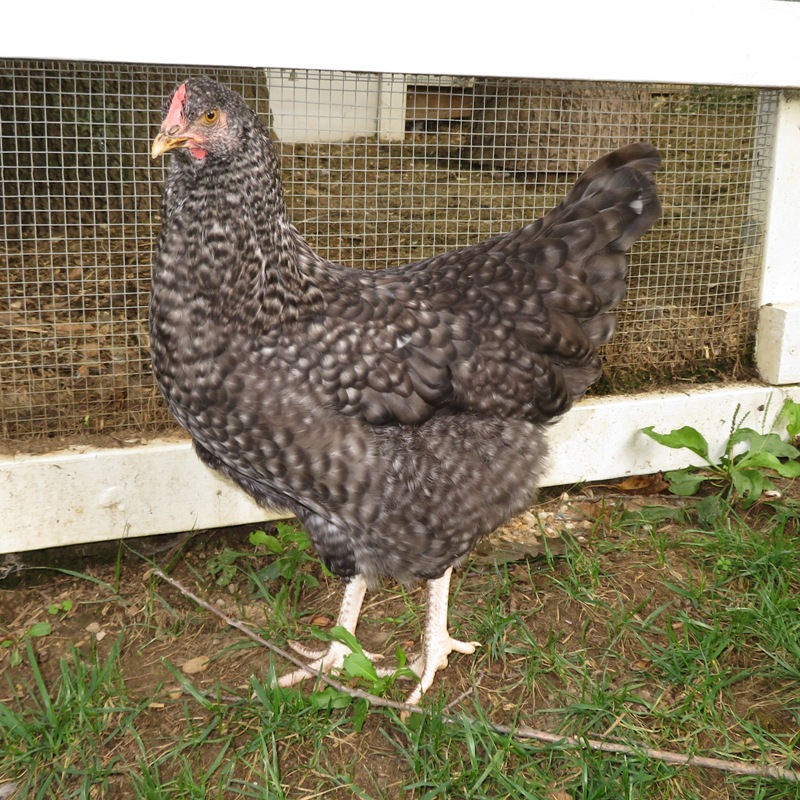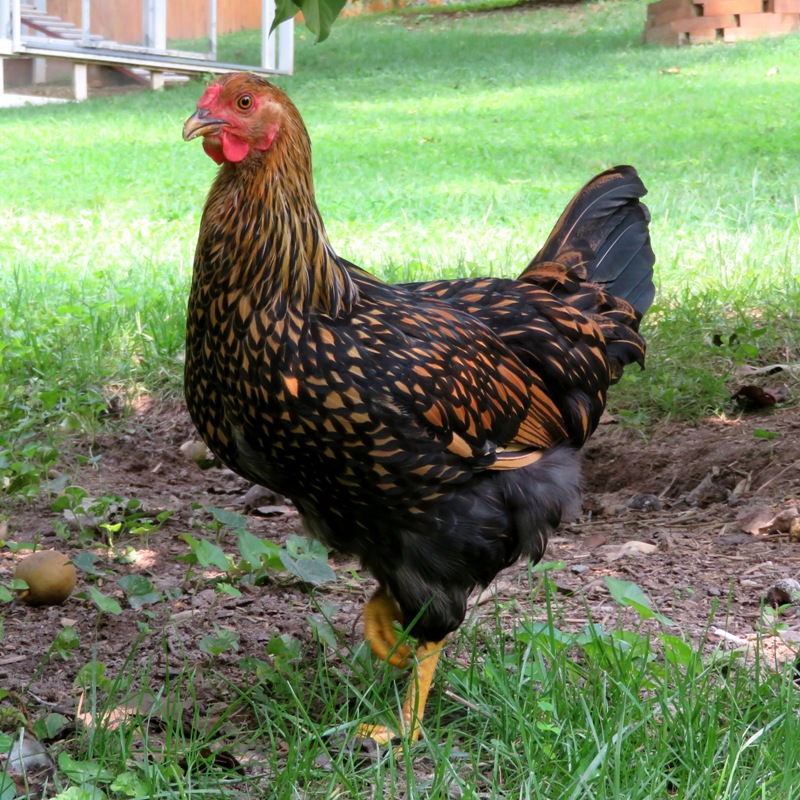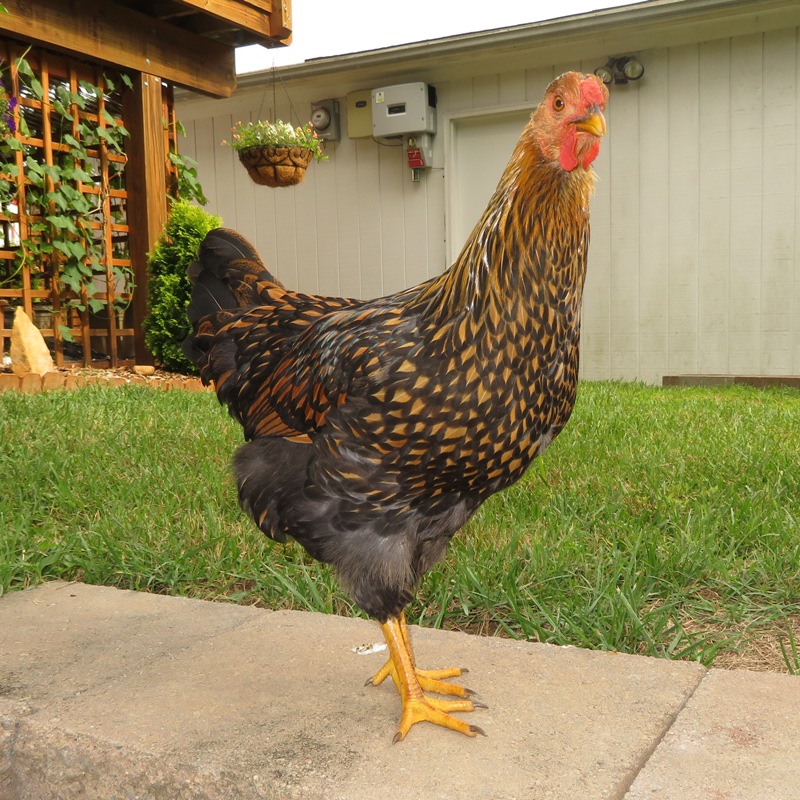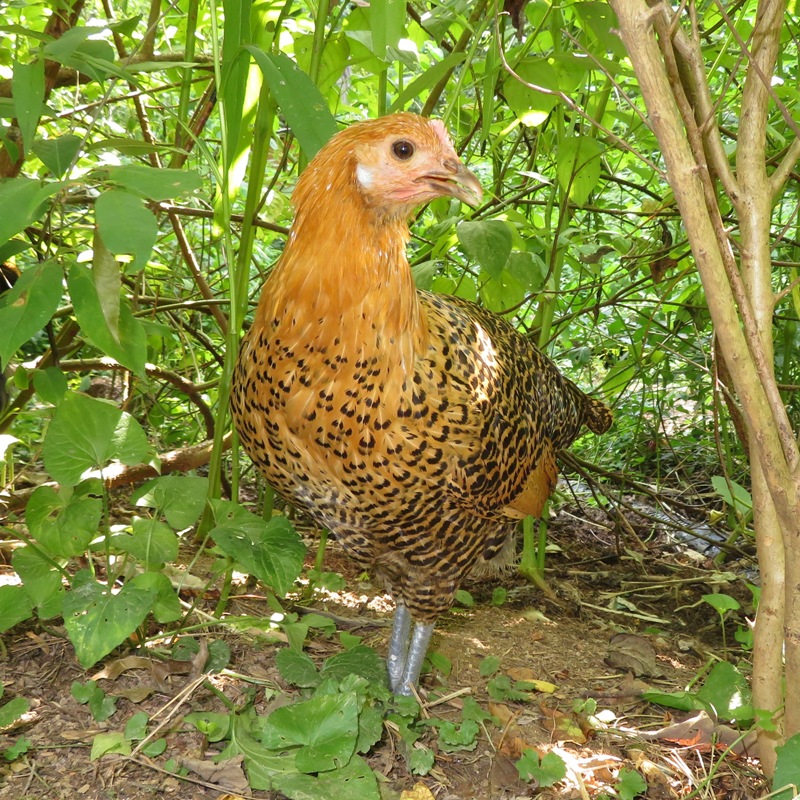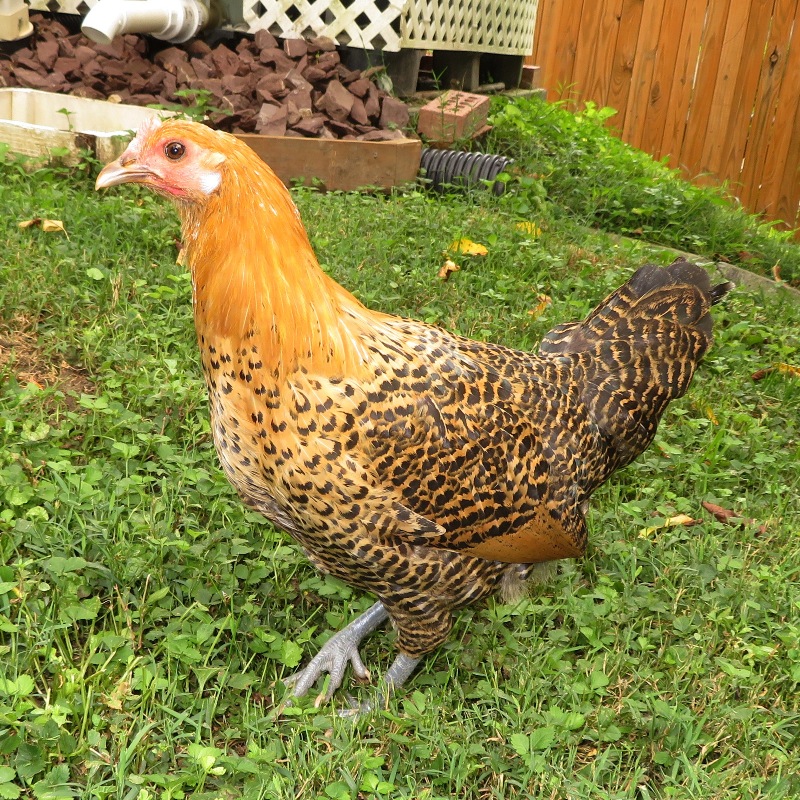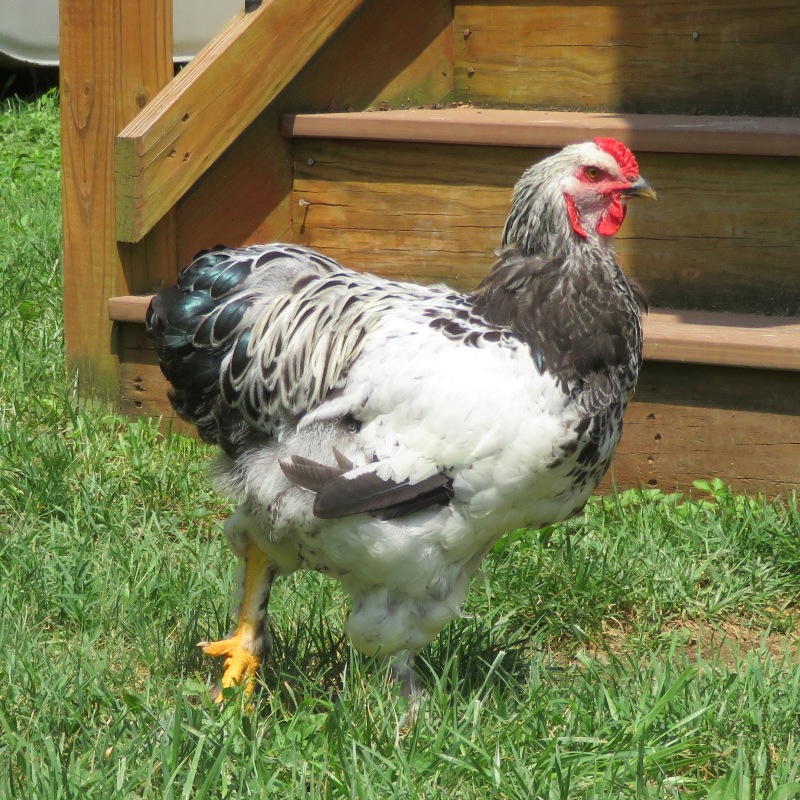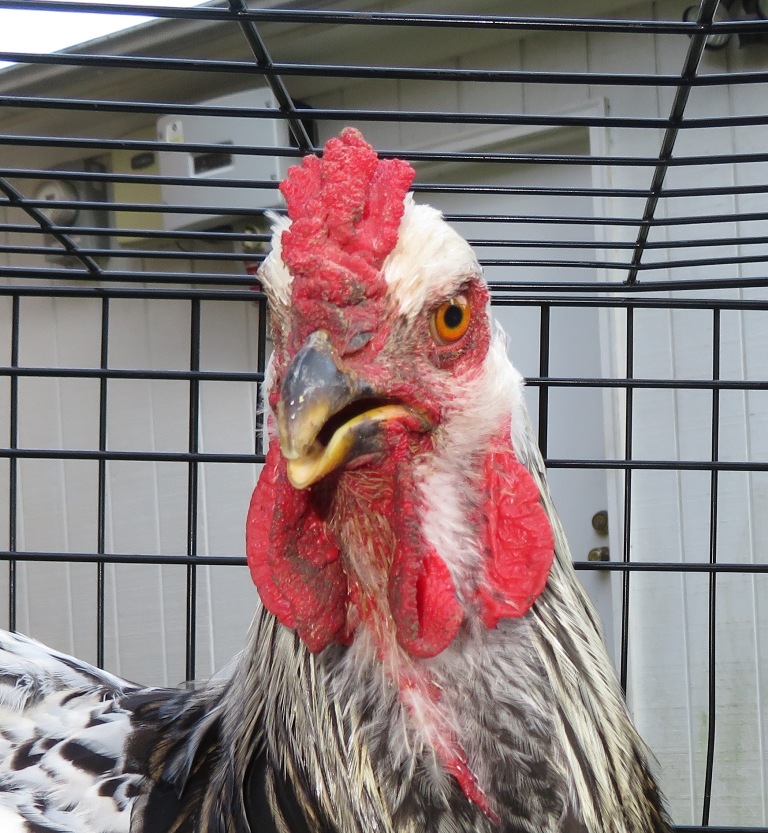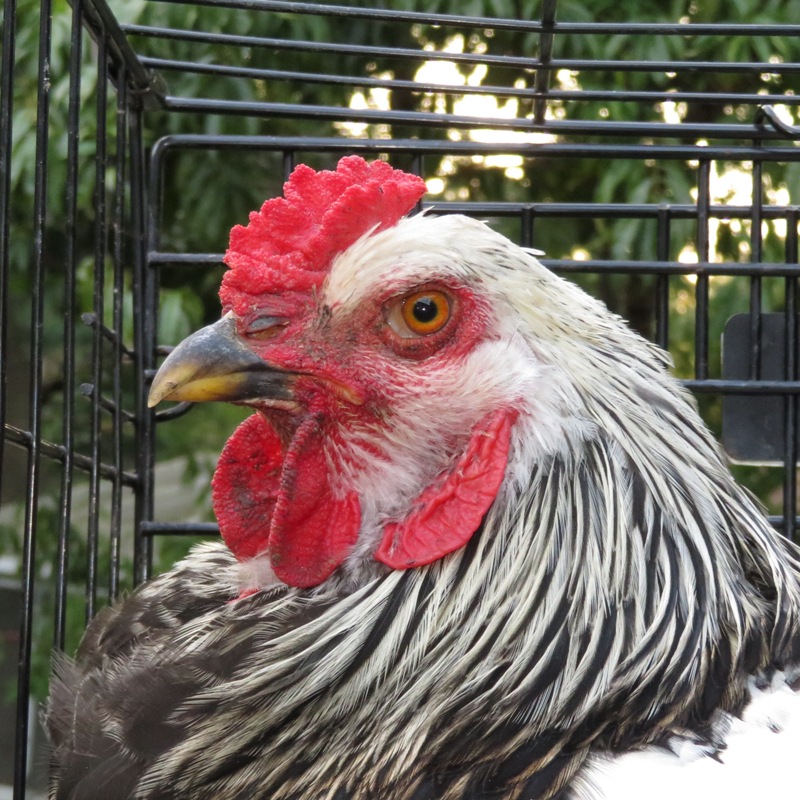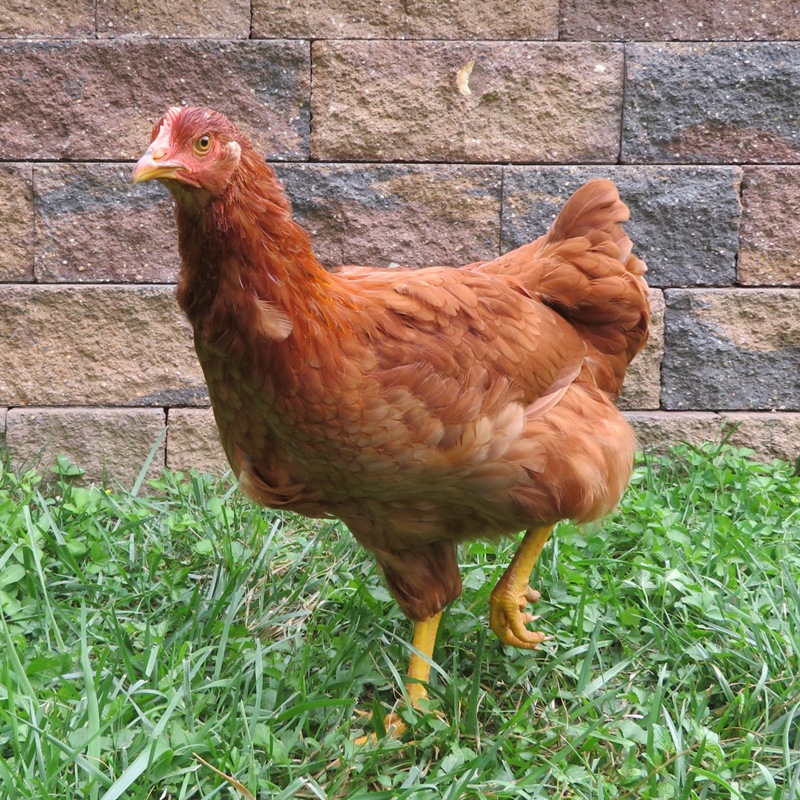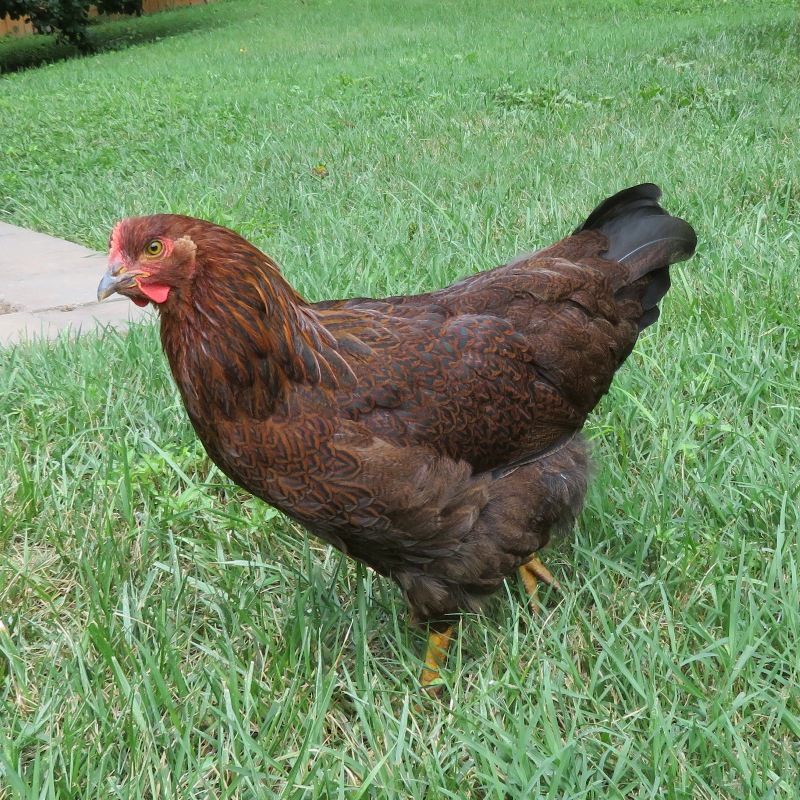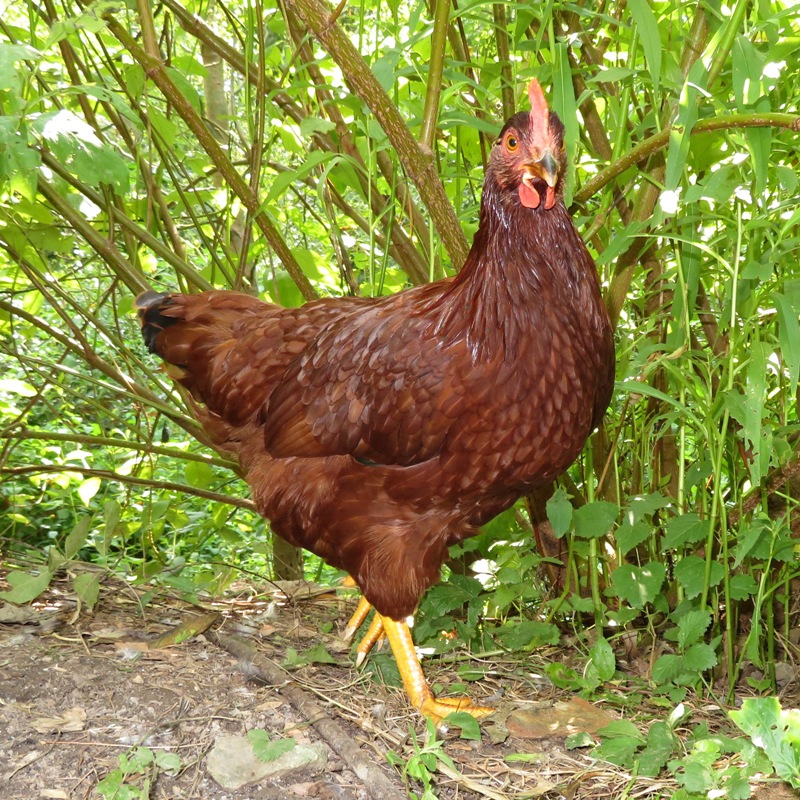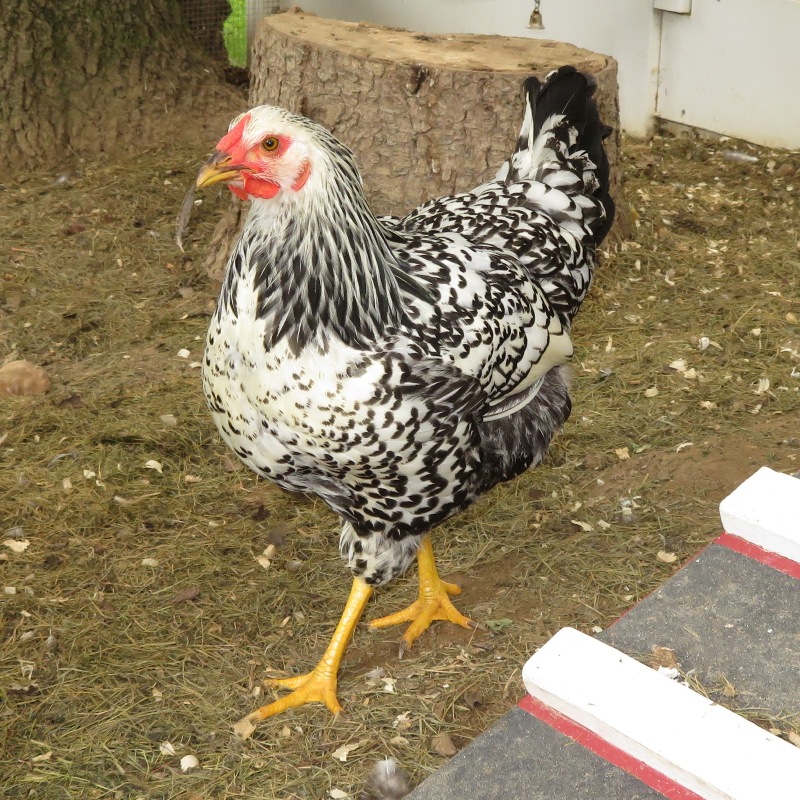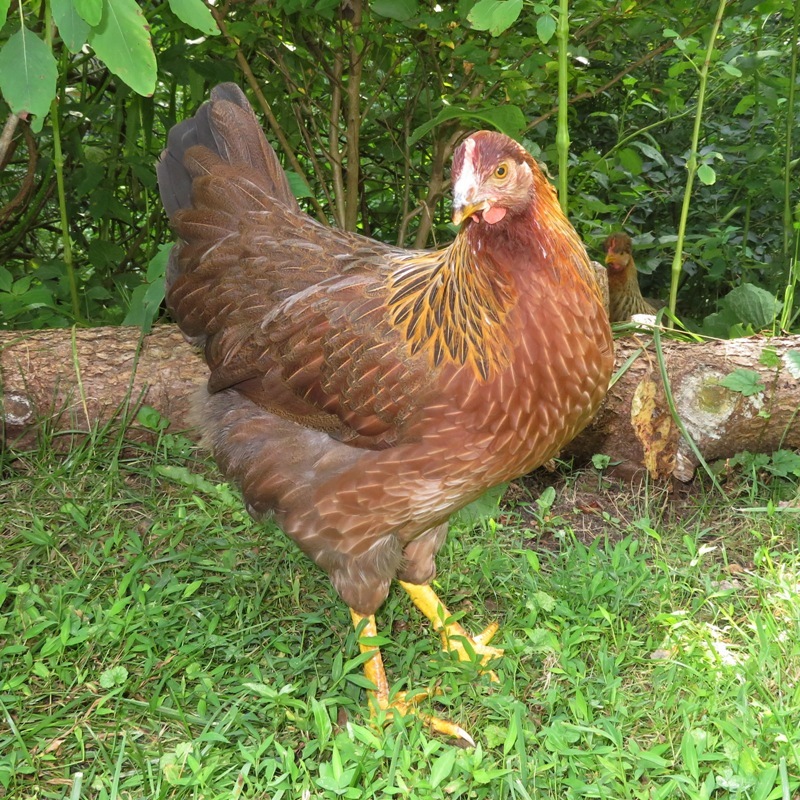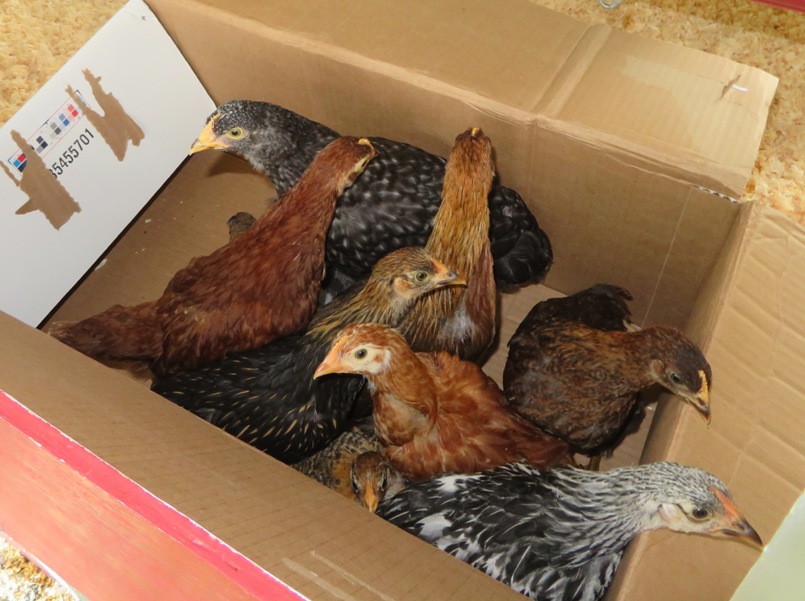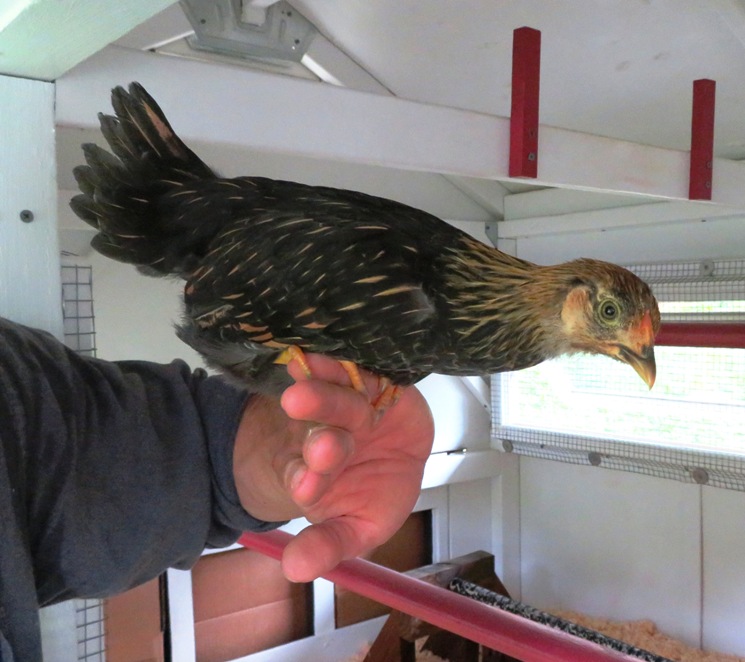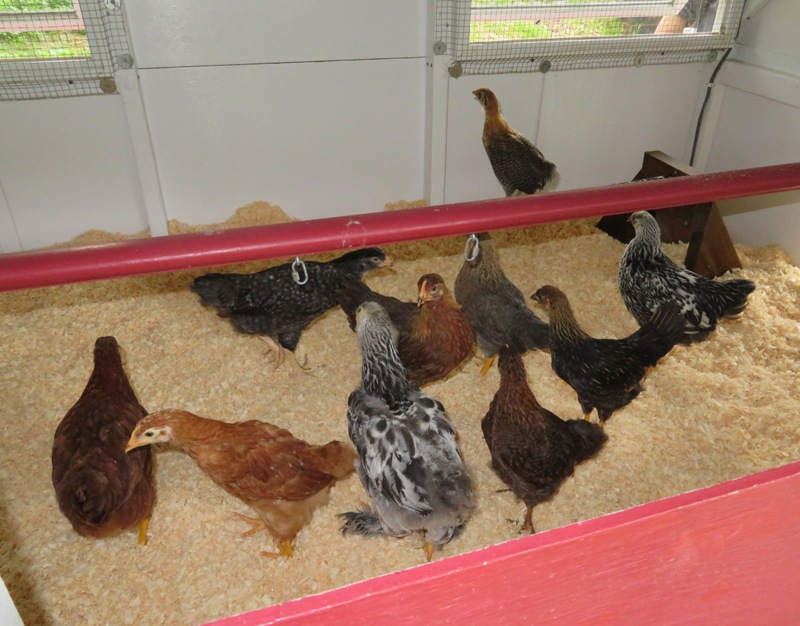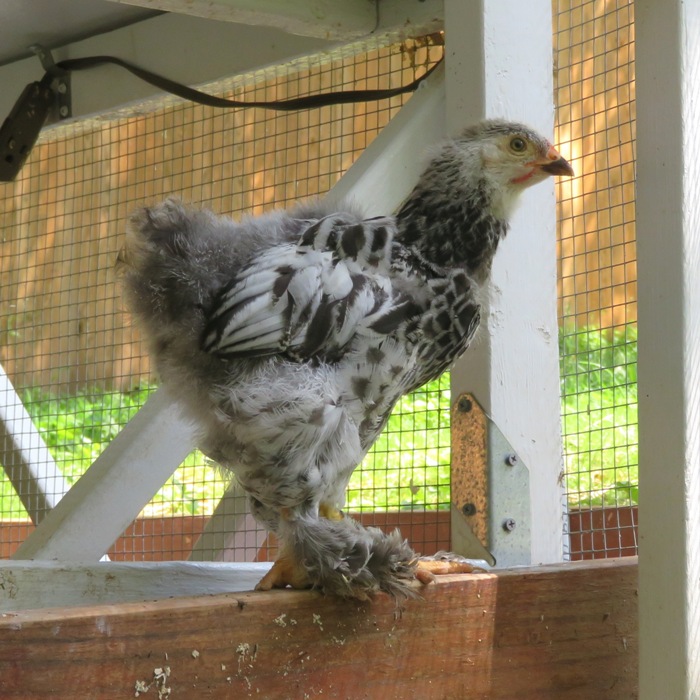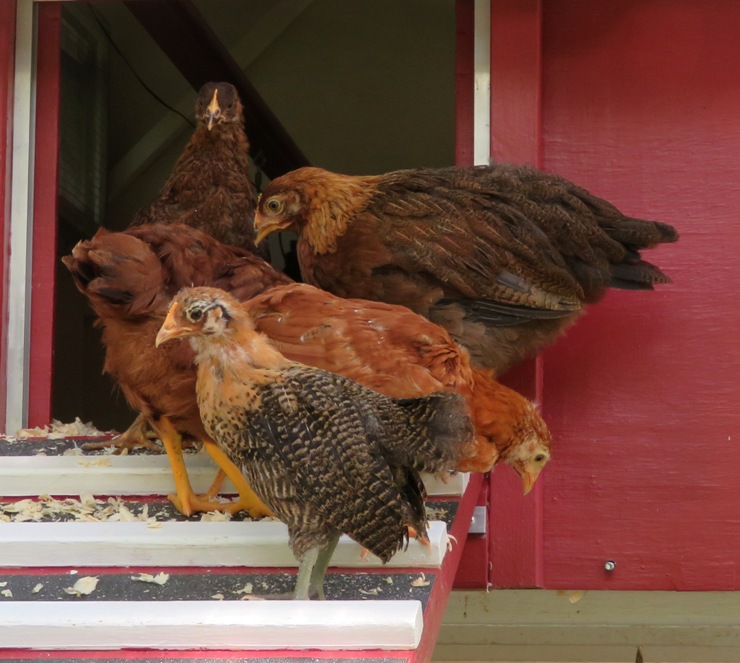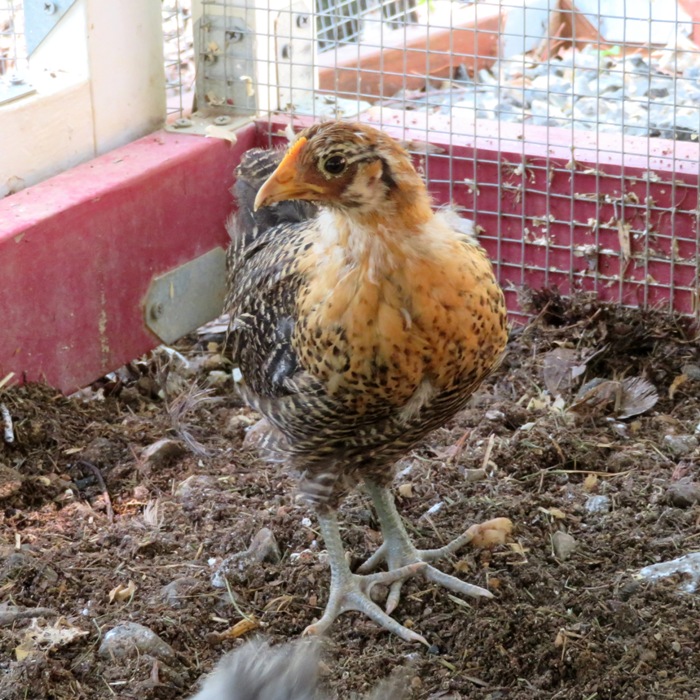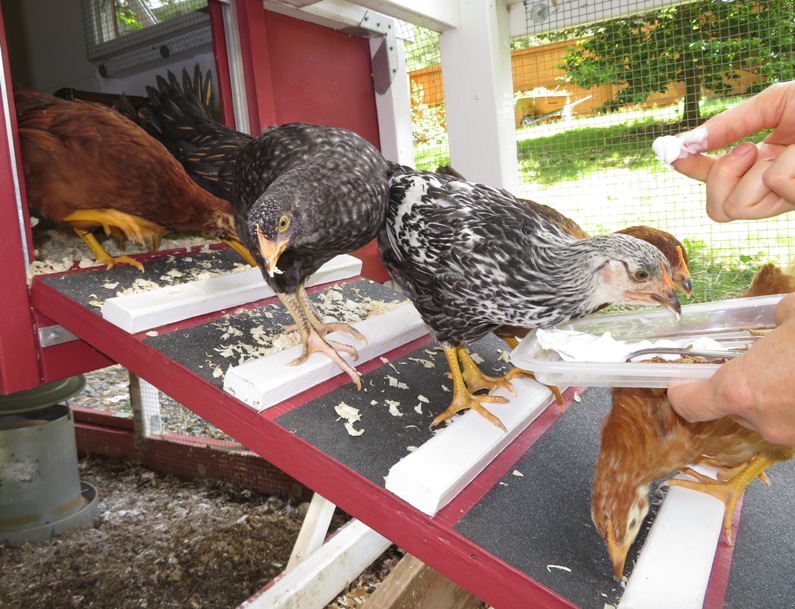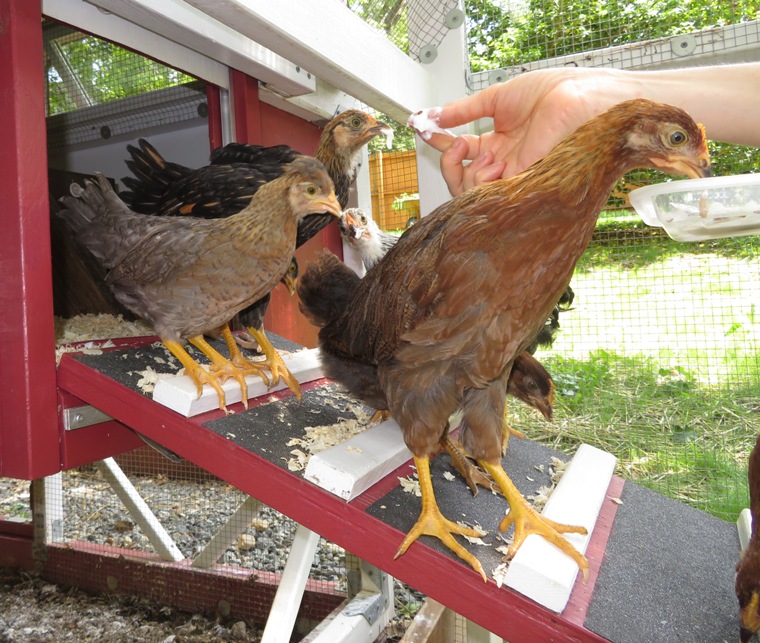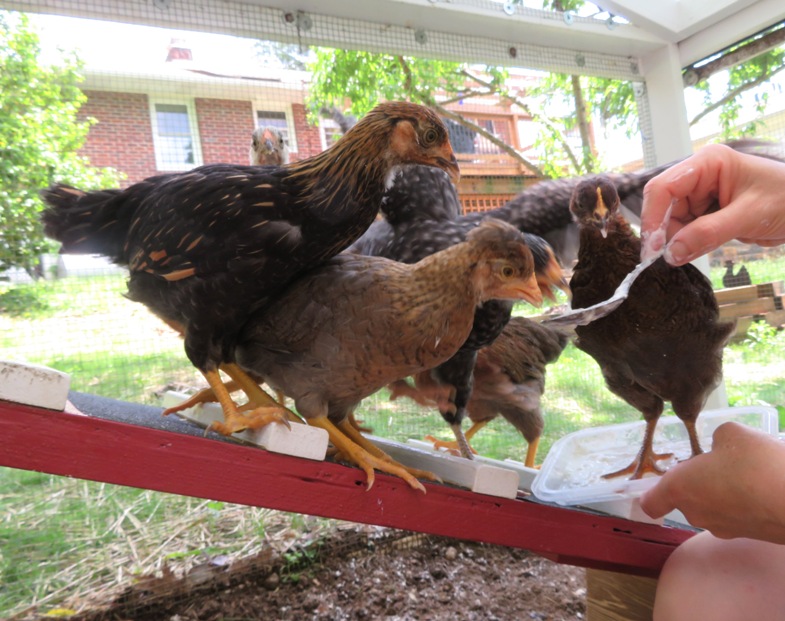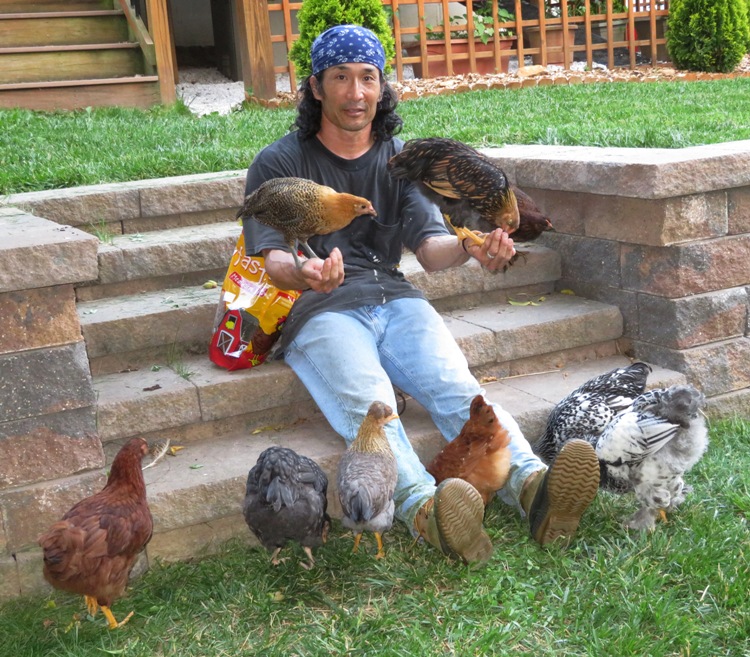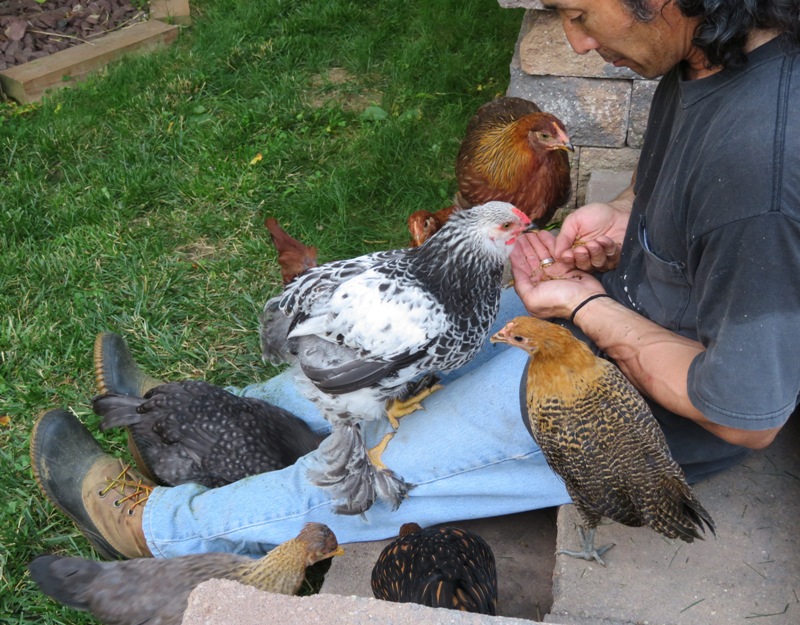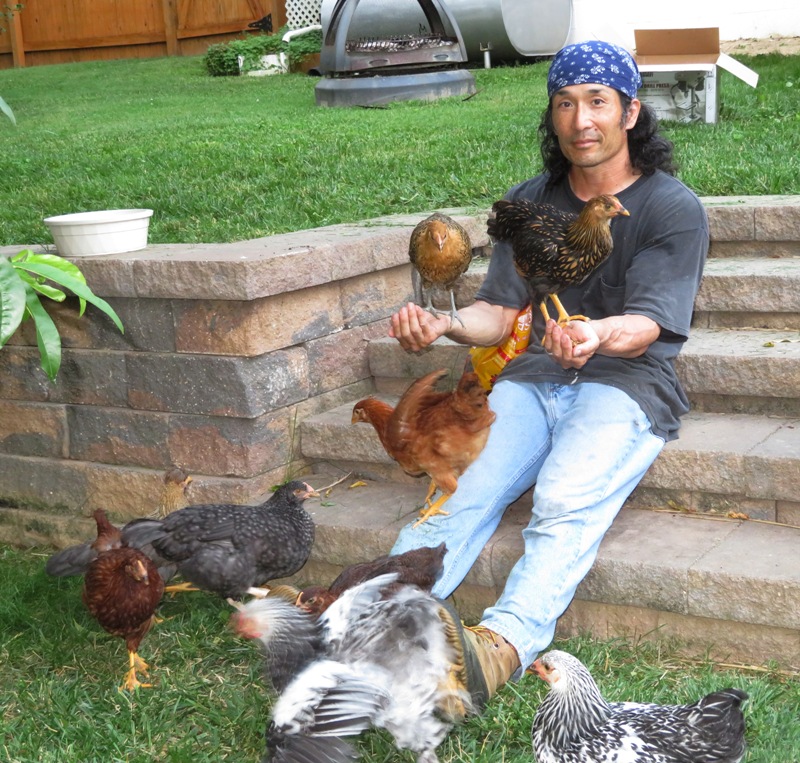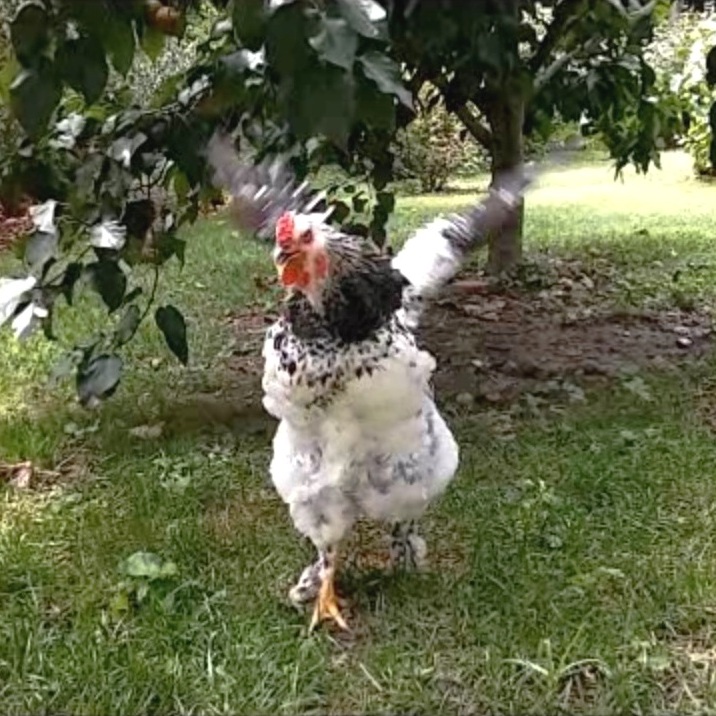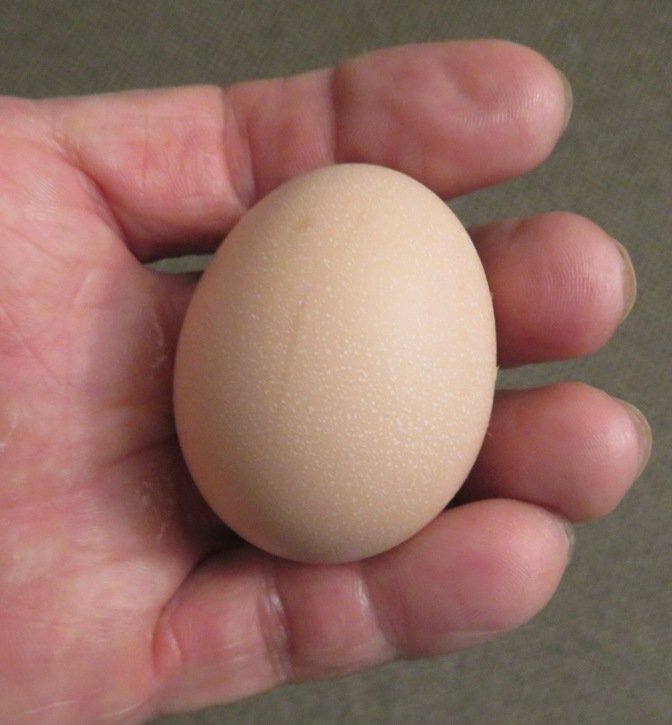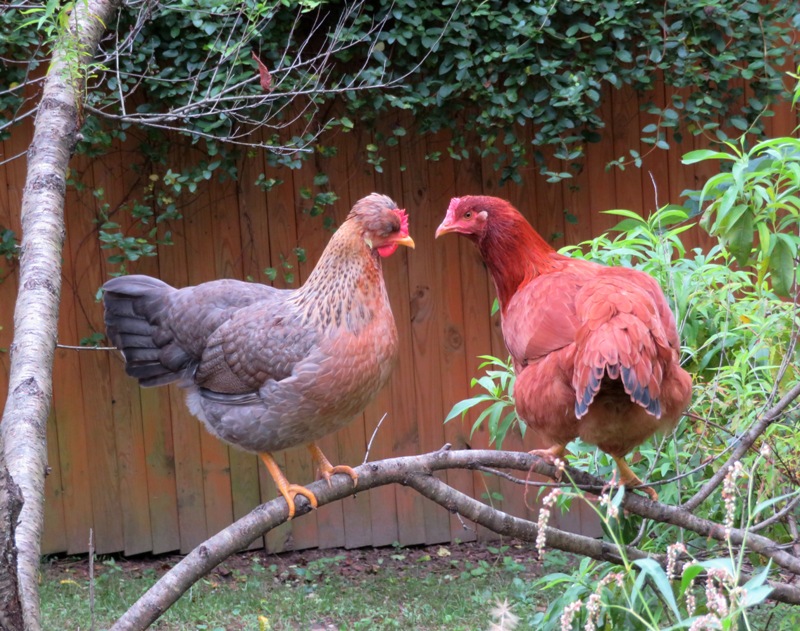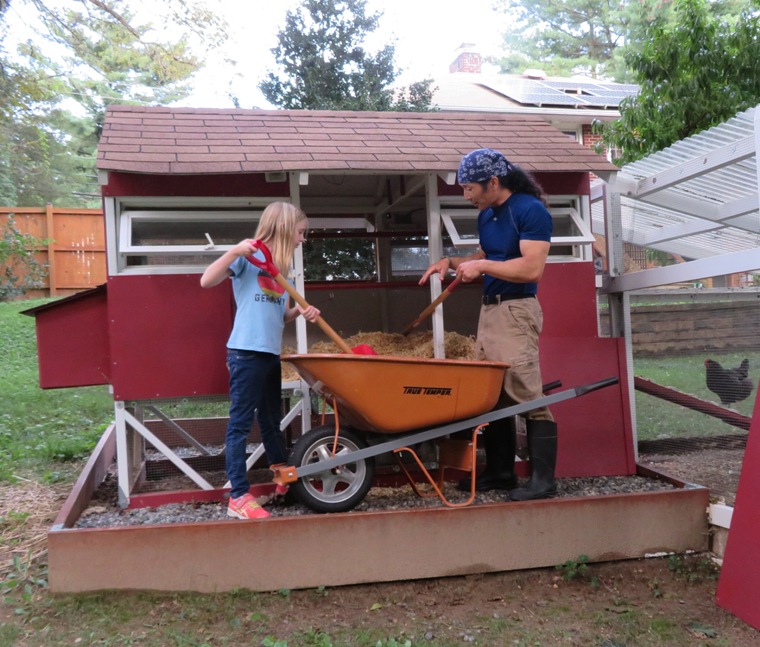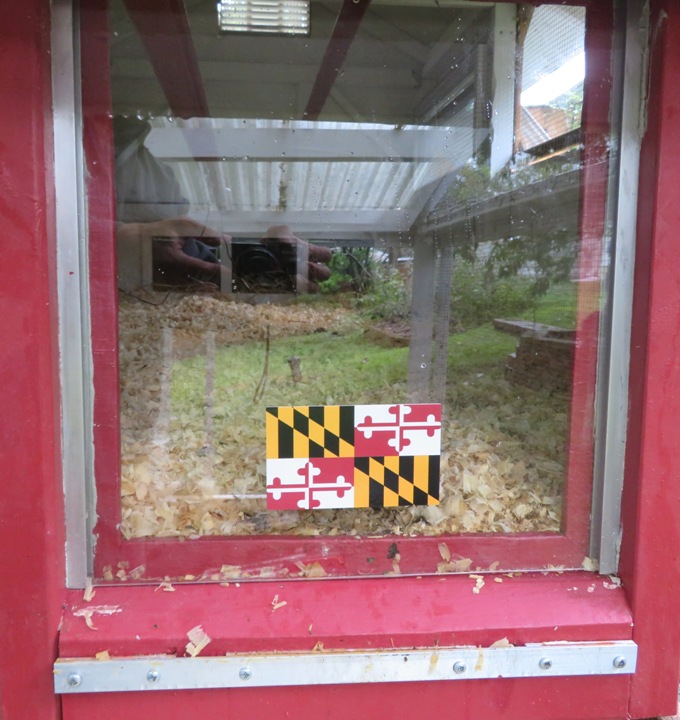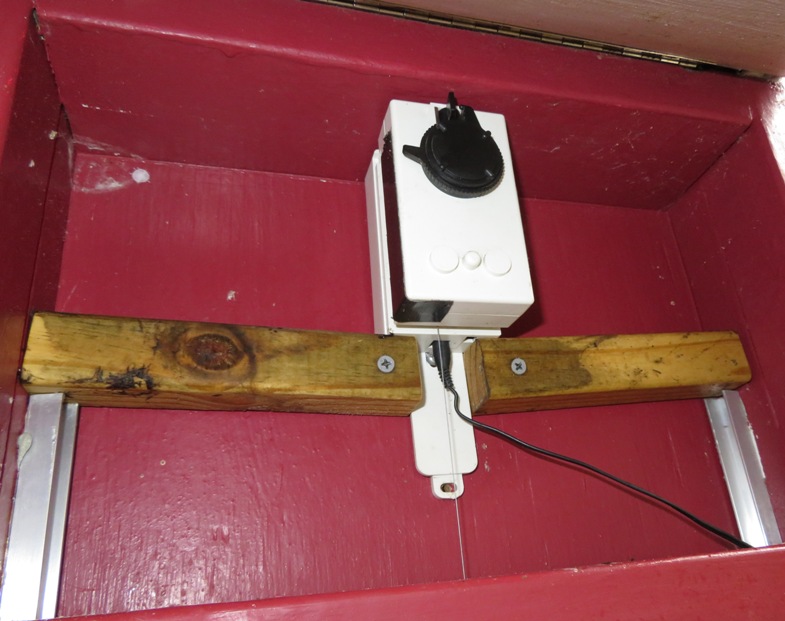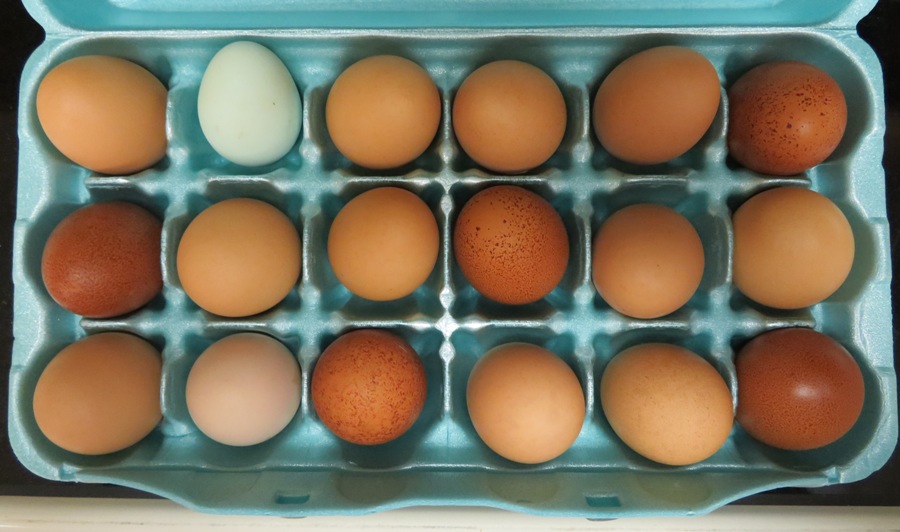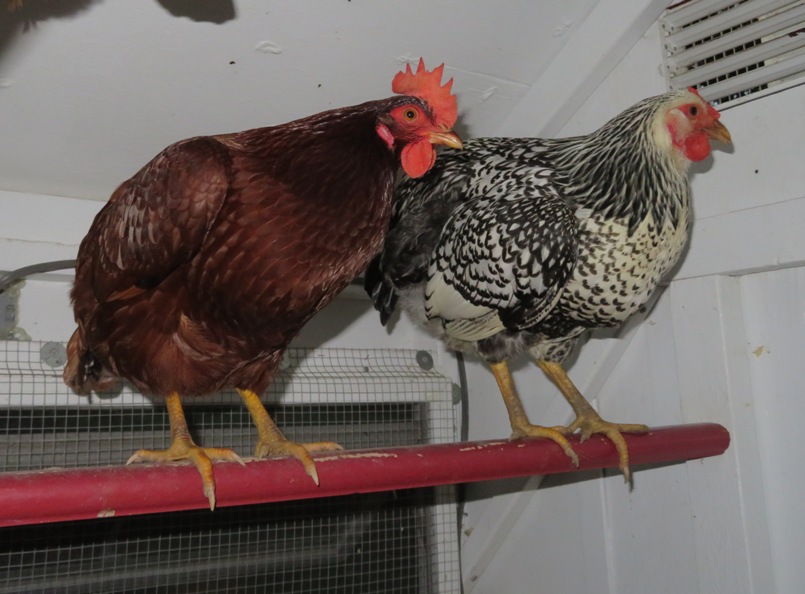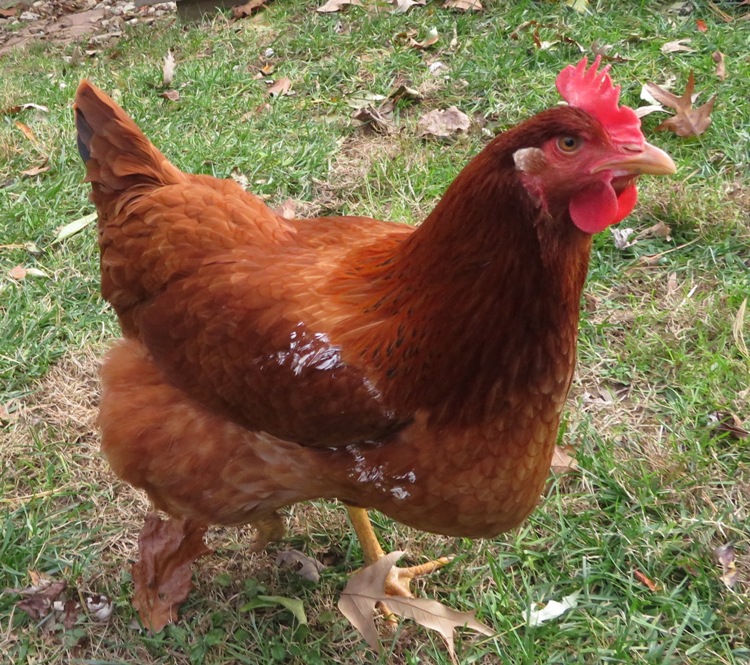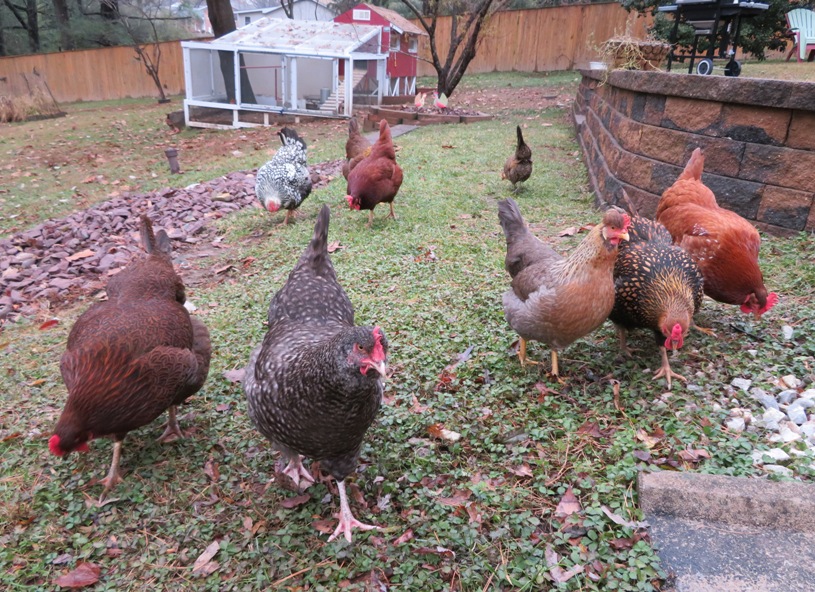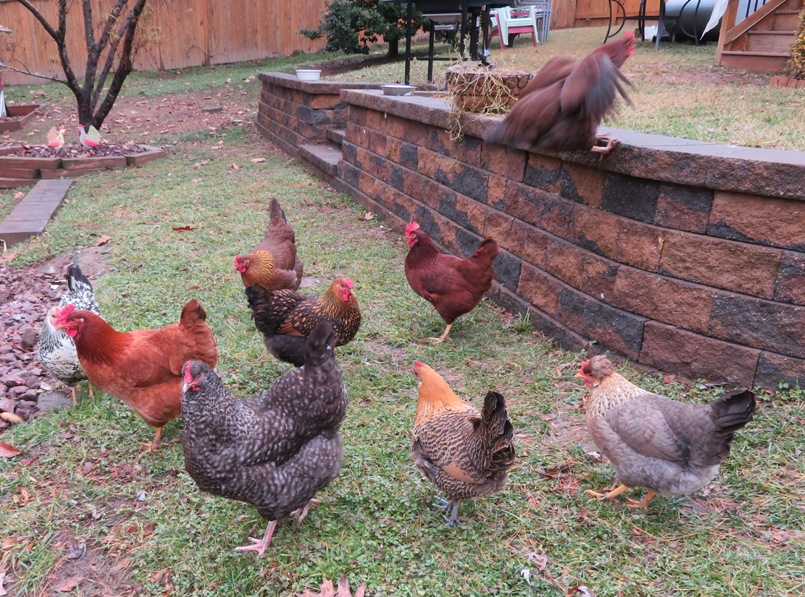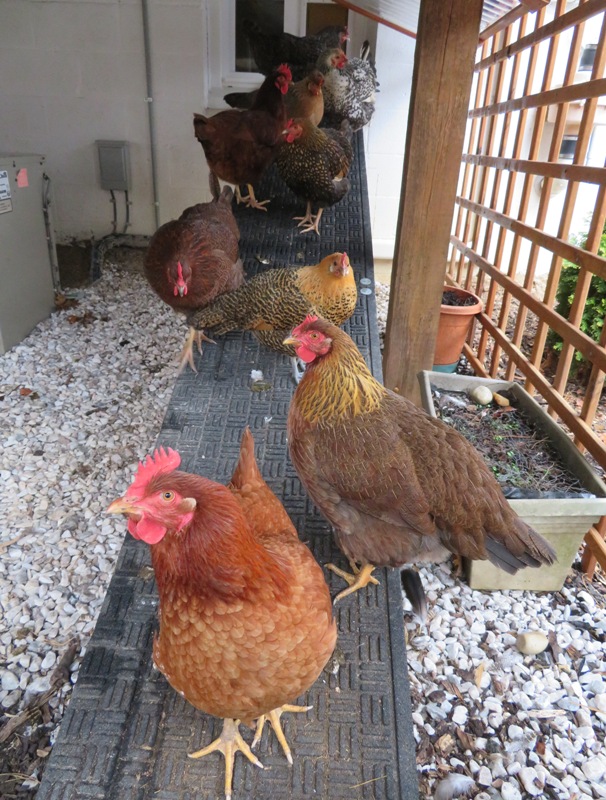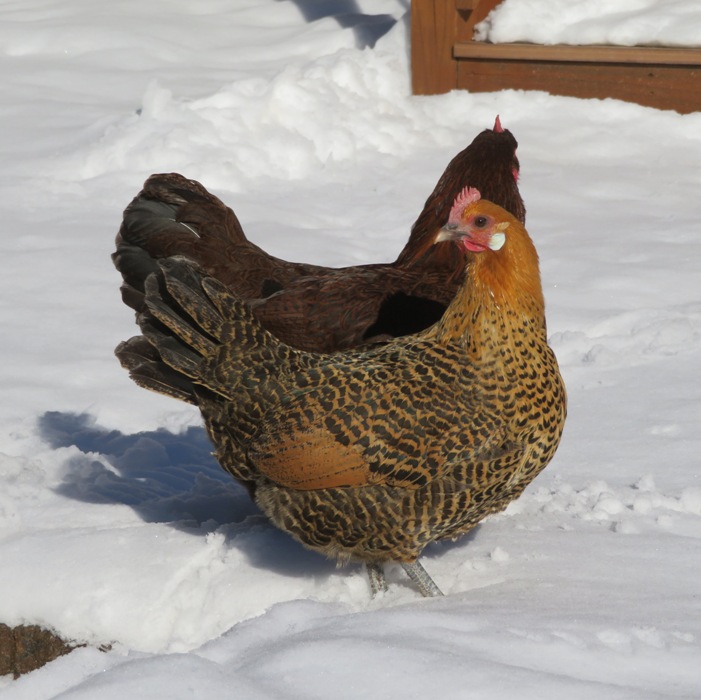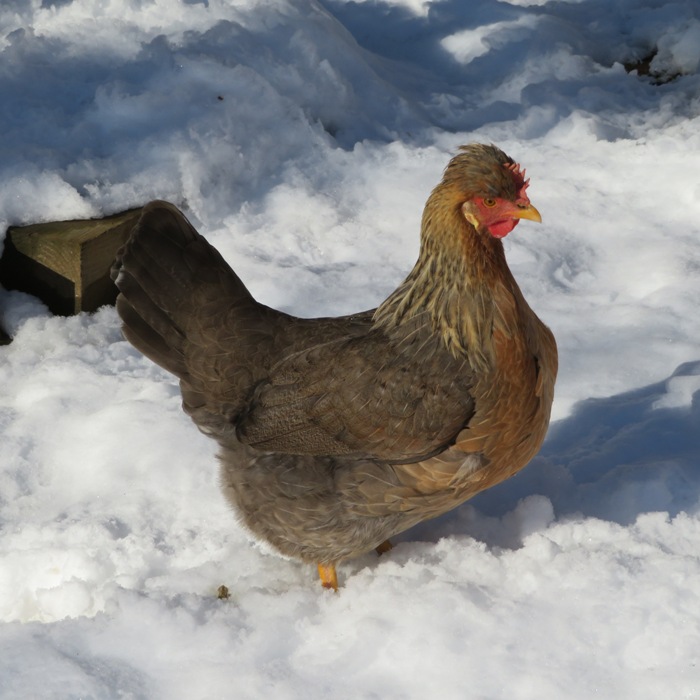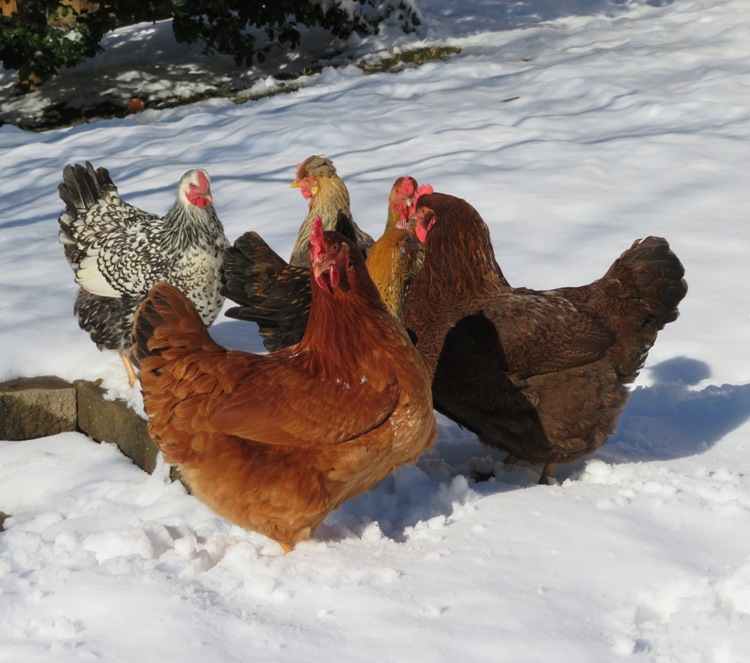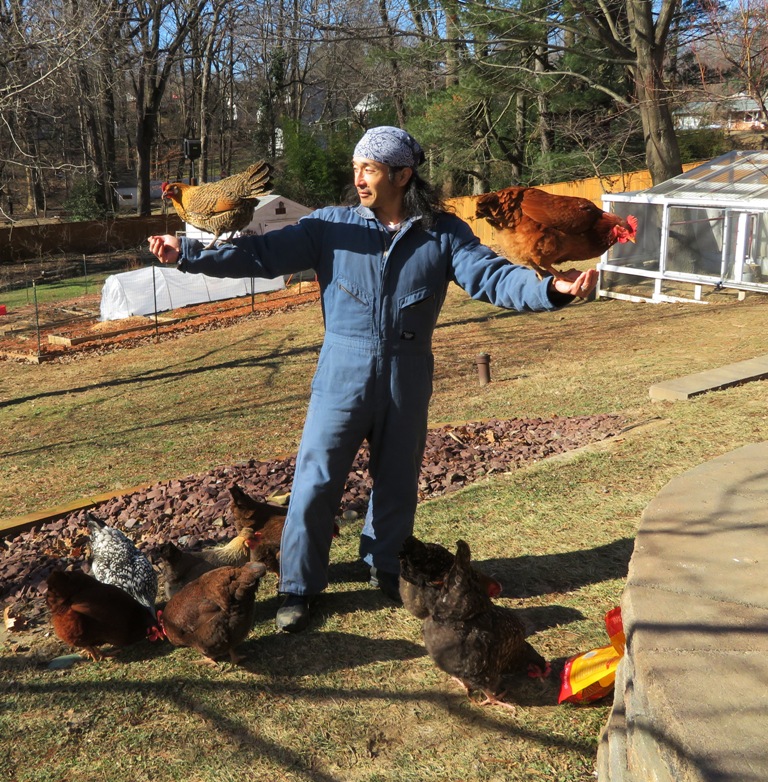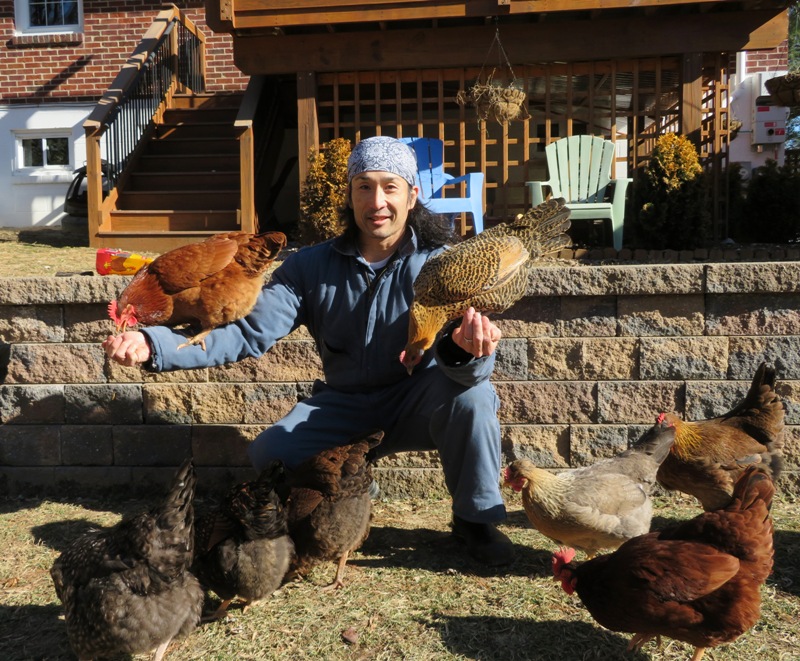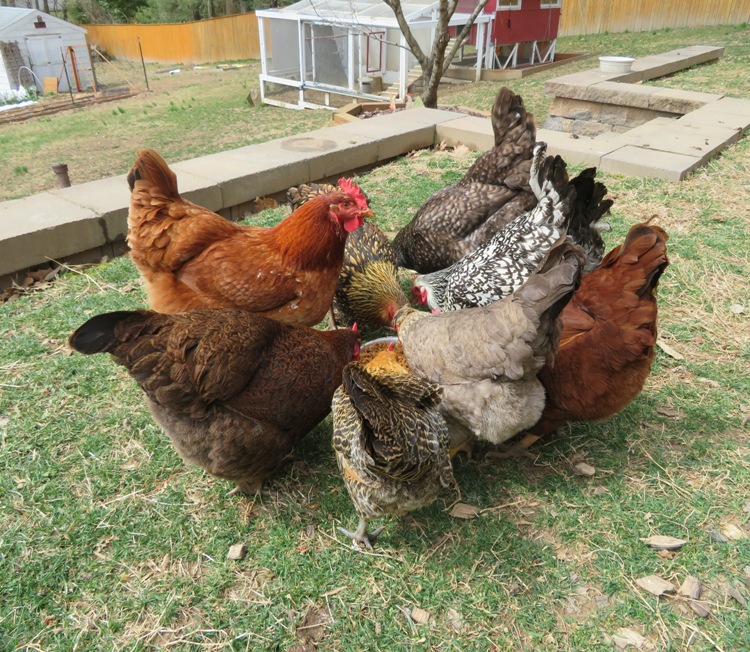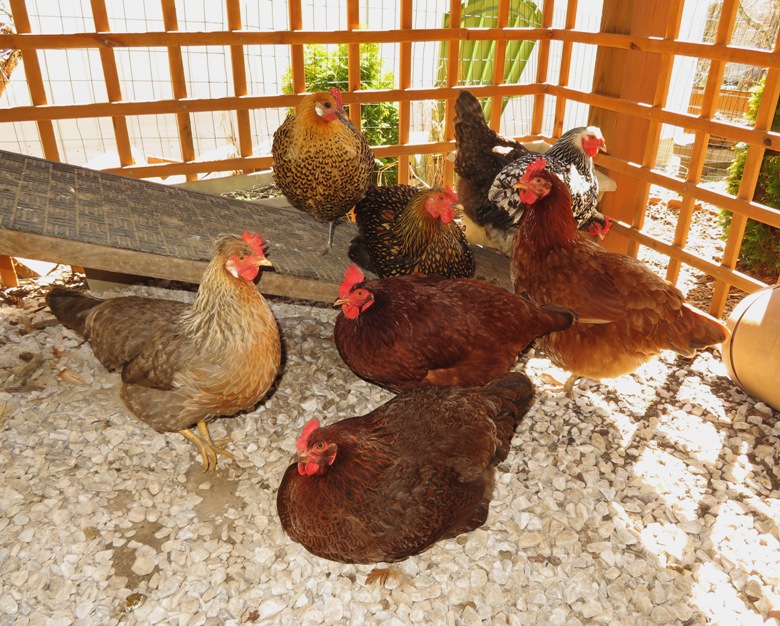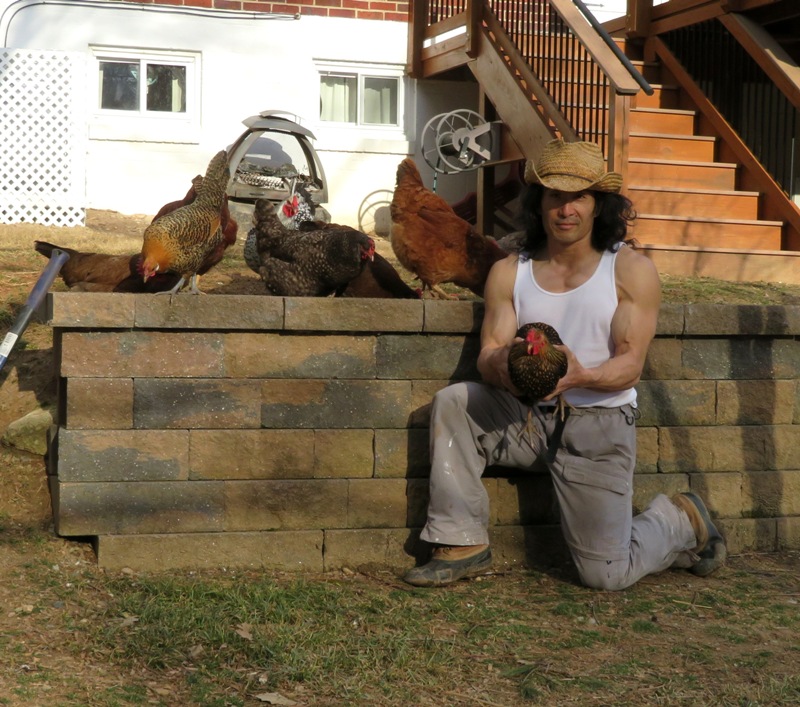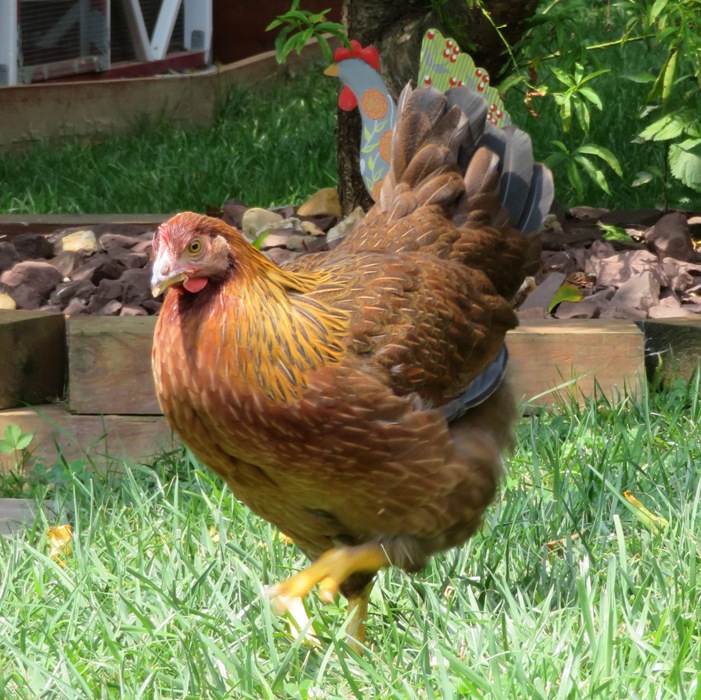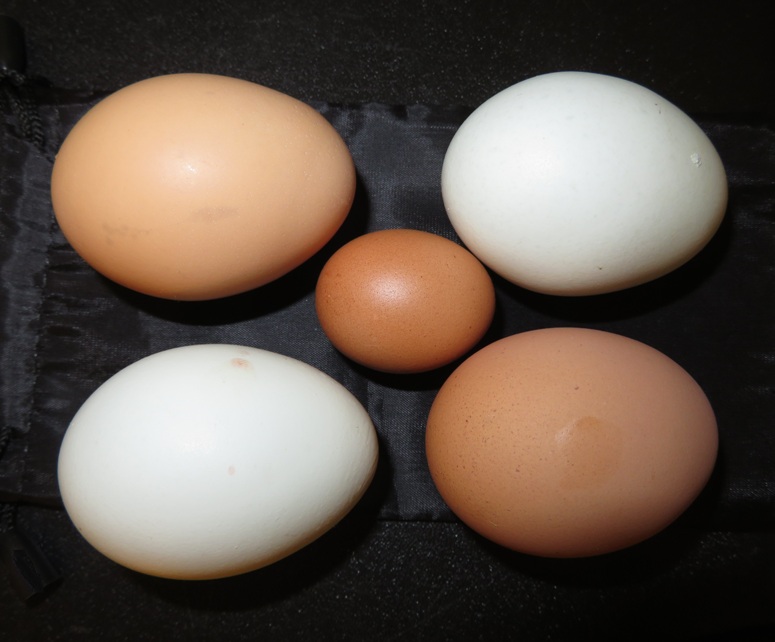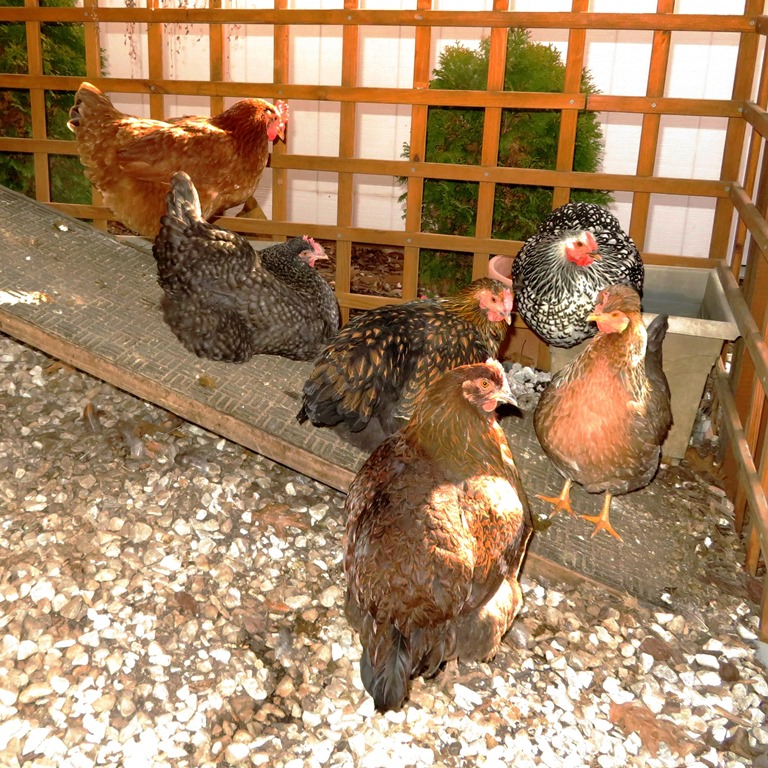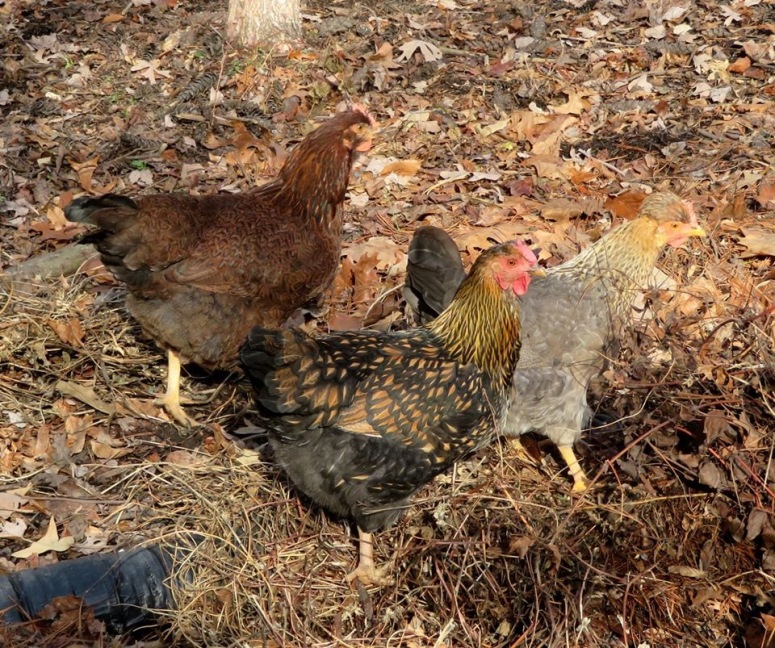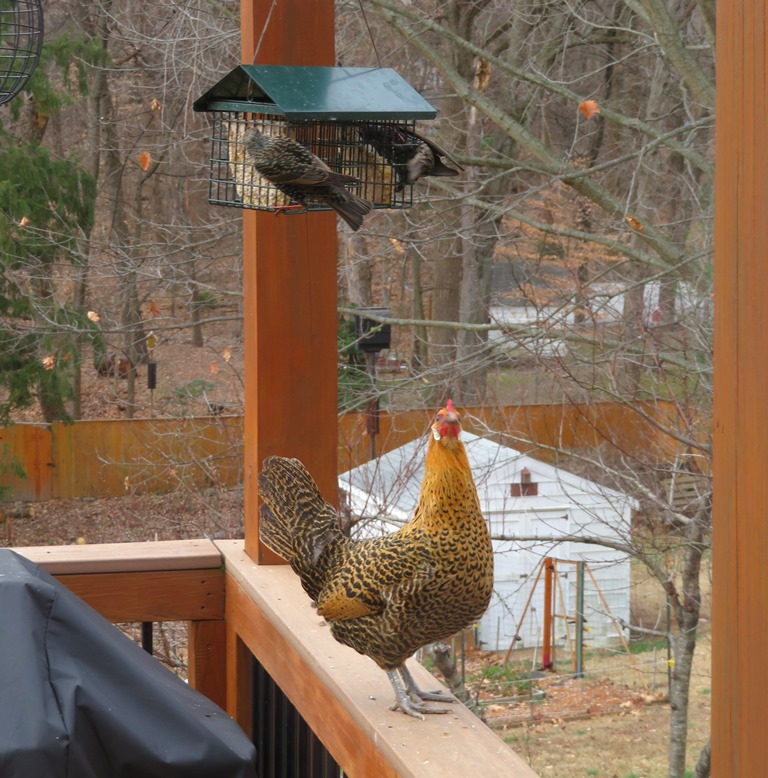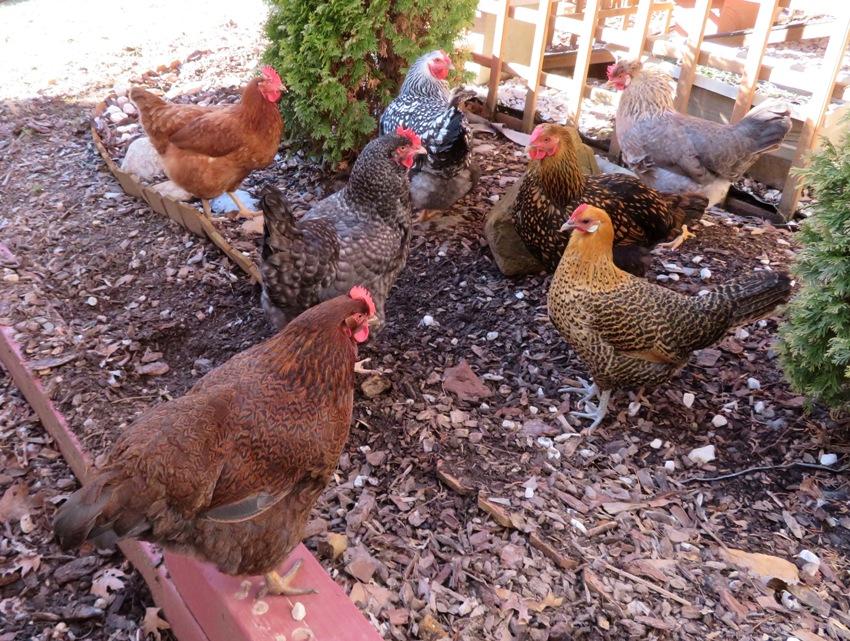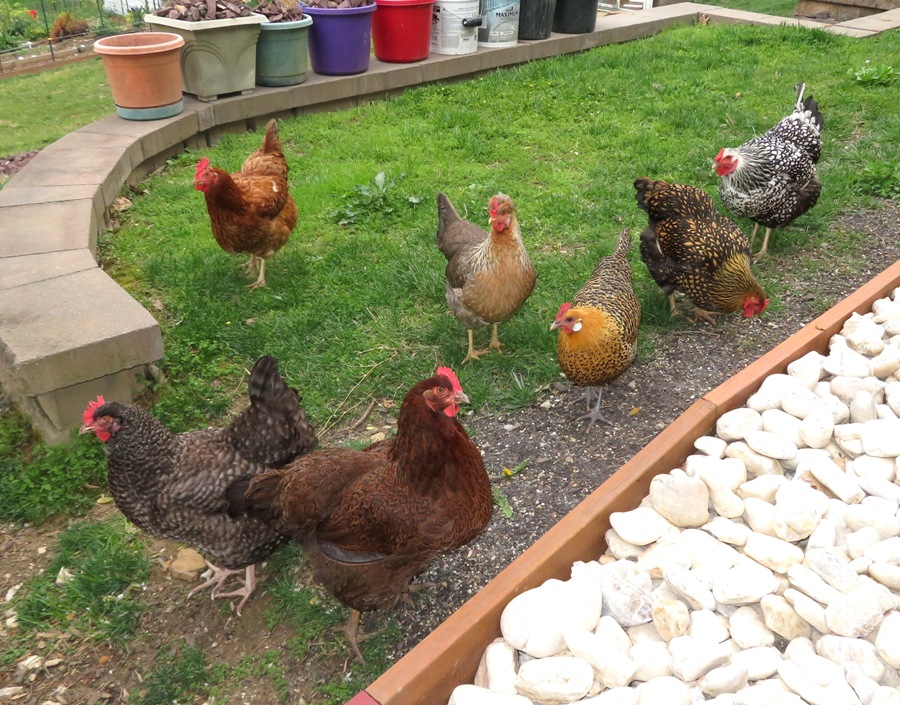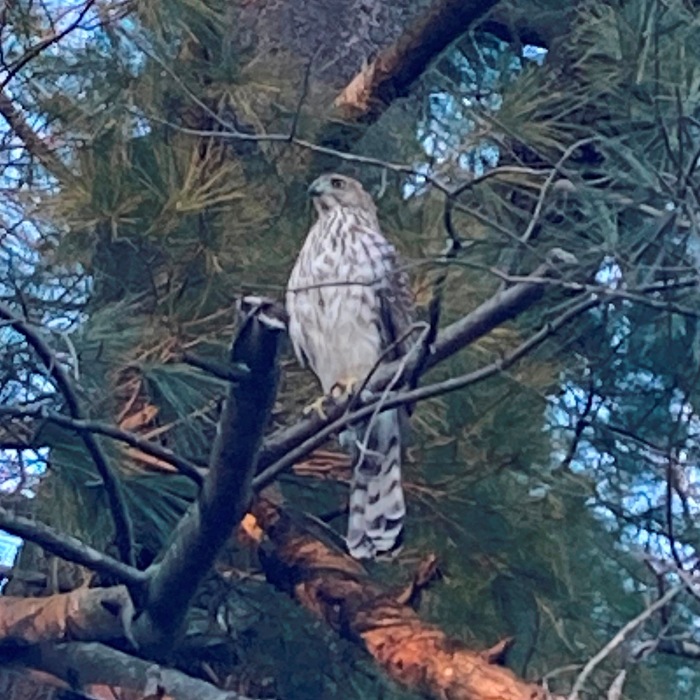Here are the chickens that comprise this flock. Note that the names are chosen to be old-fashioned female names where the first letter of the name matches the first letter of the breed.
Camellia (Cammie)
Date of birth: April 2, 2018
Breed: Cream Legbar
Eggs/Year average: 180
[21]
Description: Developed in Britain in the 1930's and quite popular in the United Kingdom, yet practically unknown in the United States. Vibrant, sky blue to pastel green eggs are just one desirable trait about this striking beauty. Cream Legbars are chatty, active, very curious and remarkable foragers. They love to investigate their surroundings and will tag along while you do chores. Charming does not even begin to describe this lovable breed. Uniquely feathered, the Legbar sports a small, slicked back crest. No matter how small, this breed has a huge personality. She'll certainly be the talk of the flock, not only because of her stunning features but her personable disposition. Average mature weight of hens: 6 pounds
[21]. This chicken costs over five times what the others do.
Clara (aka new Dorothy)
Date of birth: April 2, 2018
Breed: Cuckoo Marans
Eggs/Year average: 180+
[21]
Description: A rare breed of chicken known for their dark brown eggs. Marans are typically calm and can be easy to train. They are named after Marans, France, the town they were developed in. Cuckoo Marans Chickens are clean-legged, single combed, and are a very winter hardy dual-purpose breed. Average mature weight of hens: 4.5 pounds
[21].
Gilda
Date of birth: April 2, 2018
Breed: Golden Laced Wyandotte
Eggs/Year average: 200
[13]
Description: Except for their rich, reddish gold colored feathers edged in black, our Golden Laced Wyandottes are the same as our Silver Laced Wyandottes. These are calm birds with tight rose combs that lay brown eggs. Wyandottes are a customer favorite! They add a unique look to your flock so order them while they are in stock! Average mature weight of hens: 6.5 pounds
[21]. In Norma's and my opinion, this is one of the more attractive birds.
Gretchen
Date of birth: April 2, 2018
Breed: Golden Campine
Eggs/Year average: 150-200
[34]
Description: Beautiful birds that lay around three or more large white eggs per week. The Campine originated in Belgium. They are alert birds with close-fitting feathers, white skin color, white earlobes, and grayish-blue legs. They are super active and foraging is their specialty. They were bred primarily as layers and do not tend to sit on their eggs. Golden Campine Chickens have black and reddish-gold barring on their body and tail, with a solid reddish-gold head and neck. Average mature weight of hens: 4 pounds.
[21].
Lionel, previously Liza
Date of birth: April 2, 2018
Breed: Light Brahma
Eggs/Year average: 140+
[13]
Description: Introduced in the mid 19th century from China, they were imported to England in 1840. The American Poultry fanciers refined the original stock into a large stately breed. They make a good dual purpose breed and though they may only lay three or four eggs a week, they are known for
good winter production. Brahmas do alright in confinement but do much better if they have access to an outdoor run. They are mellow, quite hardy and make good pets. Brahmas are comfortable in heat and cold. Average mature weight of hens: 9.5 pounds
[21].
Nellie (aka new Gwendolyn)
Date of birth: April 2, 2018
Breed: New Hampshire Red
Eggs/Year average: 200
[57]
Description: The hatchery gave this to me as a freebie. They say it is either a
White Rock or a
Lakeshore Egger but I don't think she looks like either. In my opinion, she more closely resembles a
Golden Buff. After I sent them this photo, they said she is from their
All Female Rainbow Pack Chicks. So it is likely she is a
New Hampshire Red. I'm going with that.
Originating from the state of New Hampshire, these chickens are very similar to the
Rhode Island Reds, which were used in their development. However, the New Hampshire Red chickens are a lighter buff-red color than the Rhode Islands and were selected for earlier maturing and their high production of large brown eggs. New Hampshire's were also selected for their meat quality and size, and are therefore a great dual-purpose breed. New Hampshire's are a common choice for crossing with other breeds to develop laying flocks. Hens are deep-bodied and usually calm. New Hampshire Reds can survive in cold climates, however, take care of their combs as they can be prone to frostbite in the harshest winter weather
[21].
Penelope (Penny)
Date of birth: April 2, 2018
Breed: Partridge Plymouth Rock
Eggs/Year average: 210
[33]
Description: These deep-bodied, brown egg layer dual purpose breed is beautiful and practical, too. This breed's color pattern is what makes them unique. They are very friendly. Males have rich heads and mostly red upper backs, but their body, breast, and main tail feathers are black. Their hackle and saddle feathers are greenish-black laced with red. Wings are black and red. Females are a deep reddish bay with black penciling on their back, breast, and body plumage. Average mature weight of hens: 7.5 pounds
[21].
Ruby
Date of birth: April 2, 2018
Breed: Rhode Island Red
Eggs/Year average: 250
[13]
Description: A popular dual-purpose breed that is a familiar standby in many chicken coops. Like its name suggests, it is developed in Rhode Island and is even the state's official bird. The hens are calm birds, are among the best layers for a heavy breed, and they lay large brown eggs. Rhode Island Red hens can lay around 200 eggs annually but rarely brood. Roosters of this breed may become aggressive. Average mature weight of hens: 6 pounds
[21].
Sybil
Date of birth: April 2, 2018
Breed: Silver Laced Wyandotte
Eggs/Year average: 200
[57]
Description: Known as one of the most beautiful breeds. With silvery-white feathers edged with shiny black, Silver Laced Wyandottes will be a lovely addition to your backyard flock. Wyandotte chickens are deep and wide-bodied birds, are docile and good brown egg layers. They mature quickly and are a great dual-purpose option. Their close-fitting rose comb is an advantage in the cold climates of Ohio and other northern regions where single combs can sometimes freeze. Average mature weight of hens: 6.5 pounds
[21].
Wilma (aka new Edith)
Date of birth: April 2, 2018
Breed: Welsummer
Eggs/Year average: 180+
[21]
Description: A rare breed of chicken with Dutch origins, named after the village of Welsum, Holland. They are coveted for the dark reddish-brown speckled eggs. Welsummers are still considered fairly new to North America, imported in the early 1900s. They adapt well to any environment and are excellent foragers. The Welsummer egg is especially notable and a favorite for egg baskets. They range in a variety of reddish brown colors from terracotta to mahogany, with varying amounts of brown speckles. No two eggs are alike. Average mature weight of hens: 4.5 pounds
[21].


